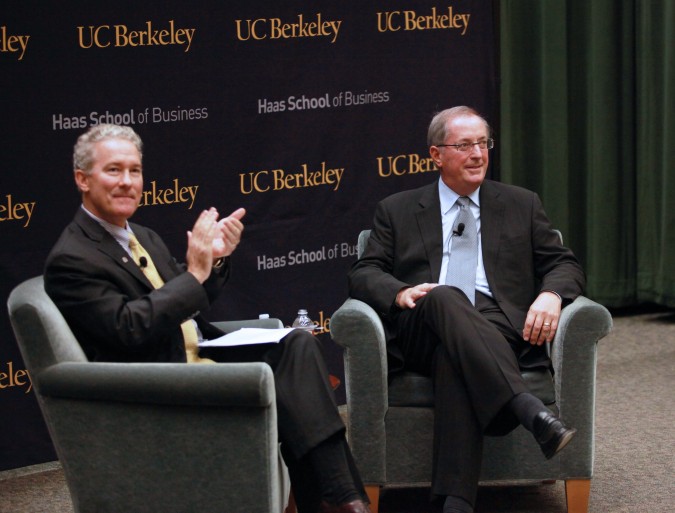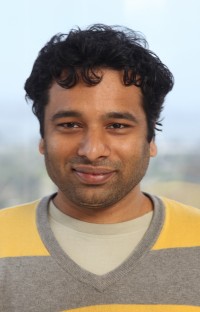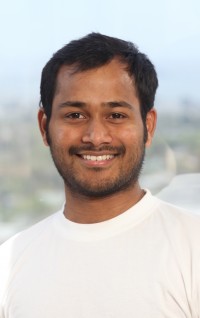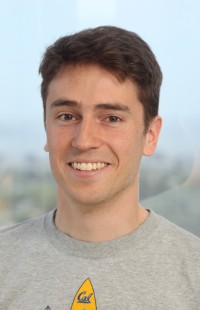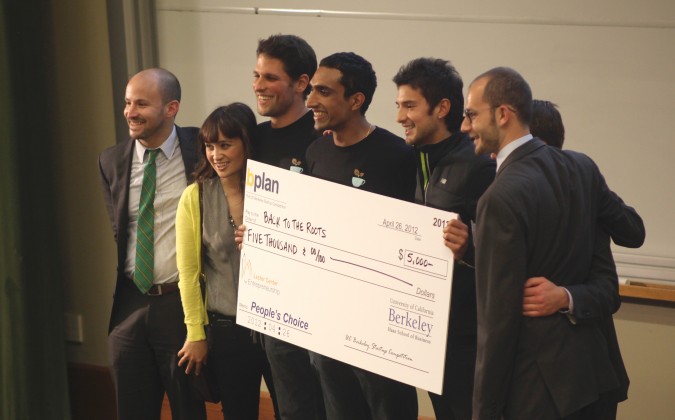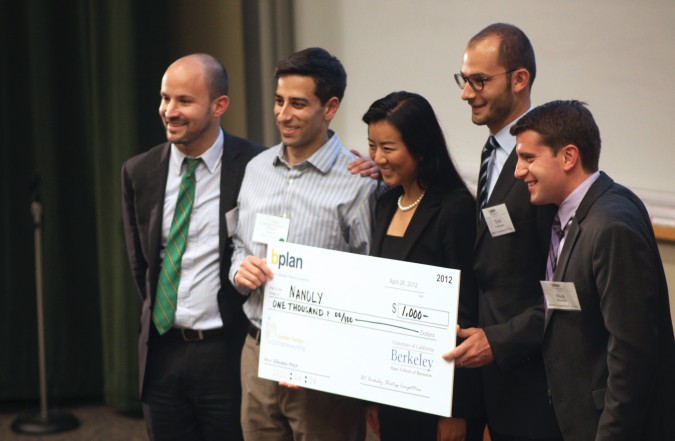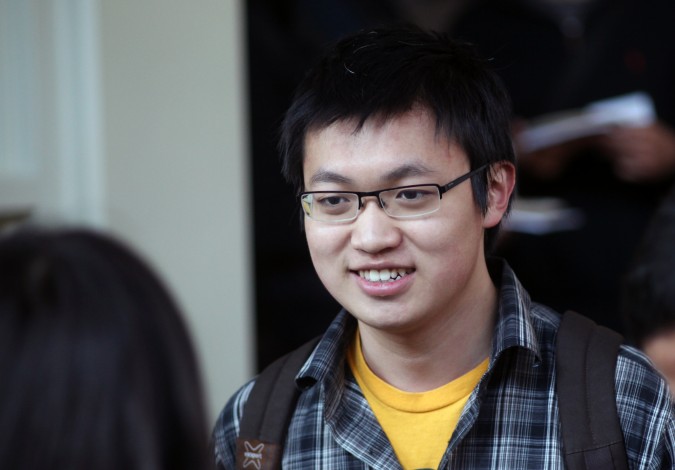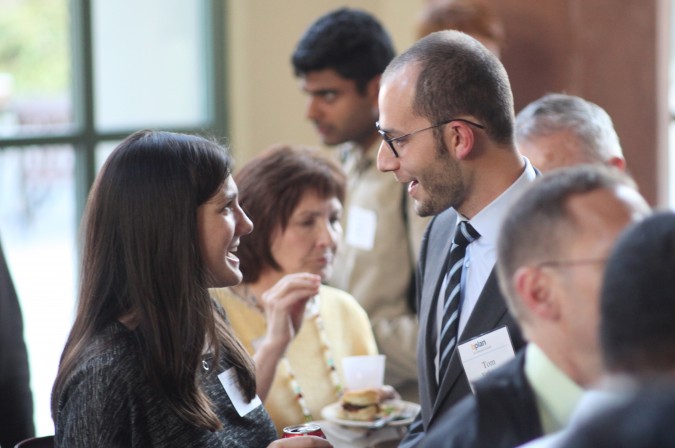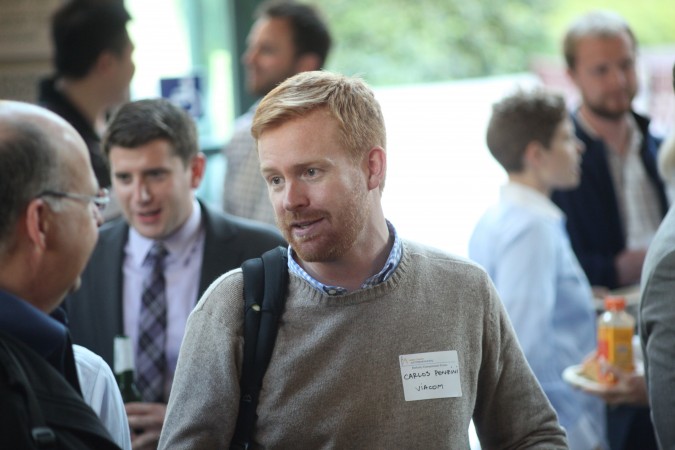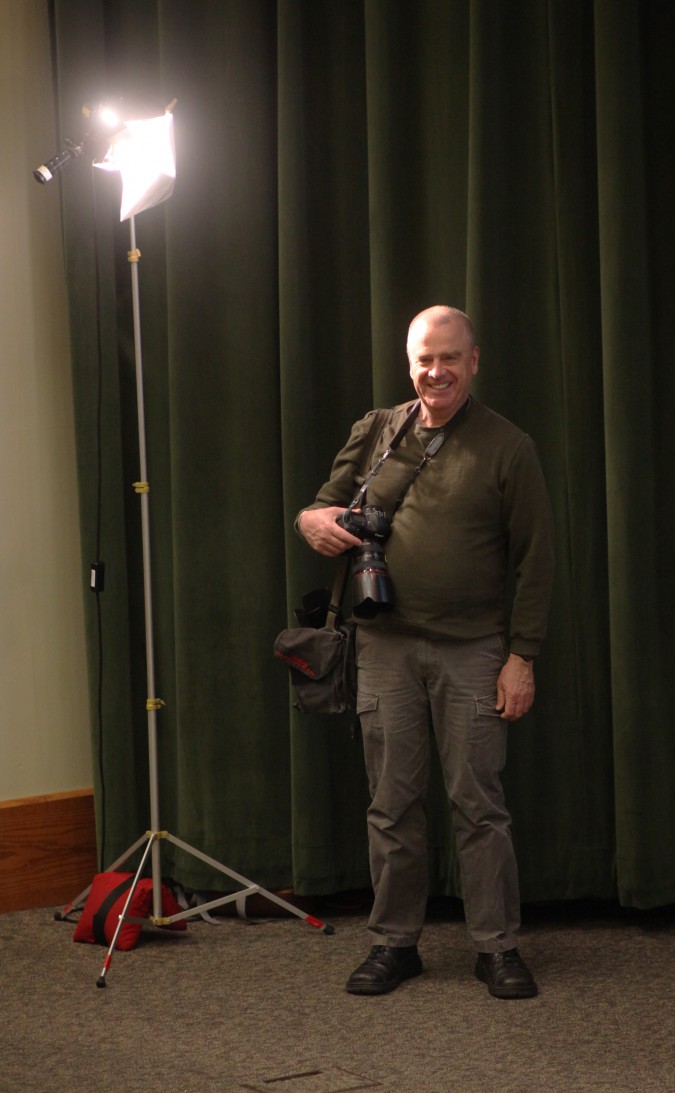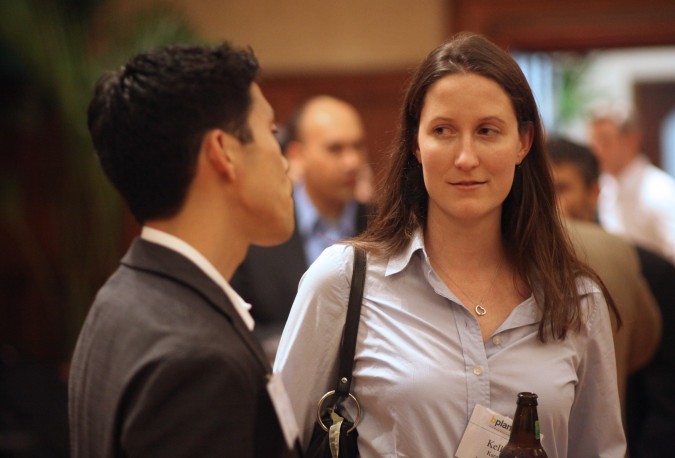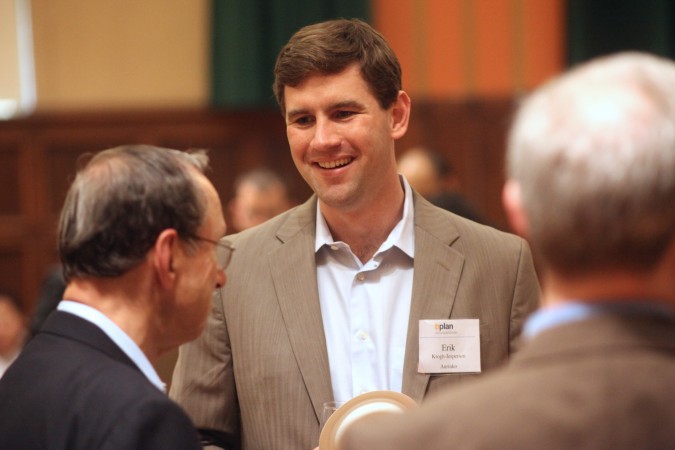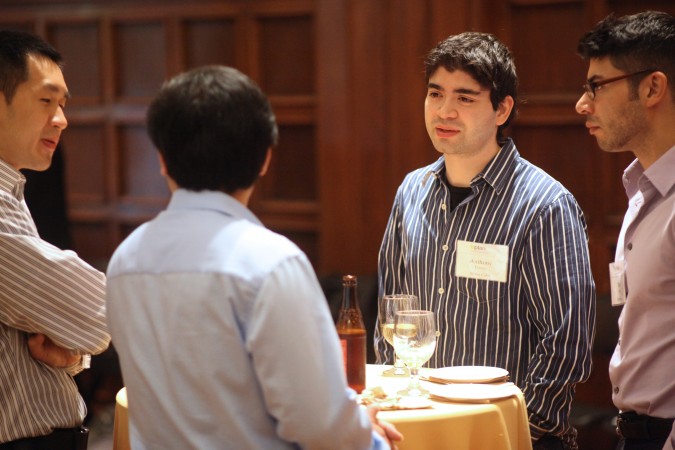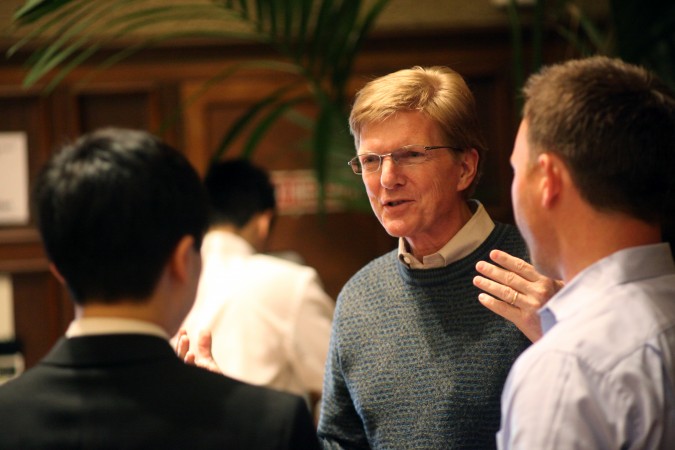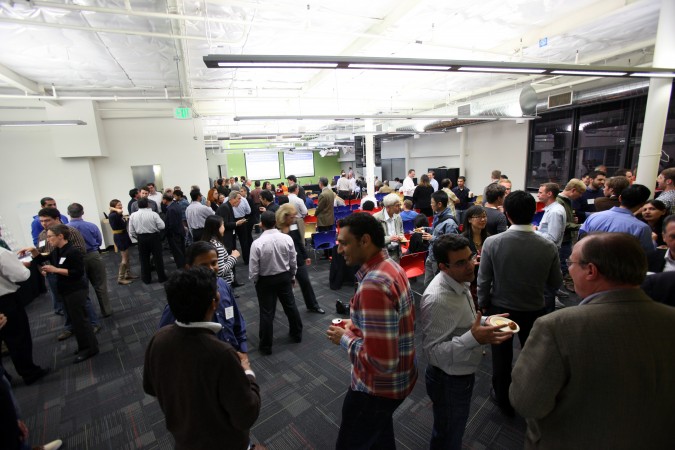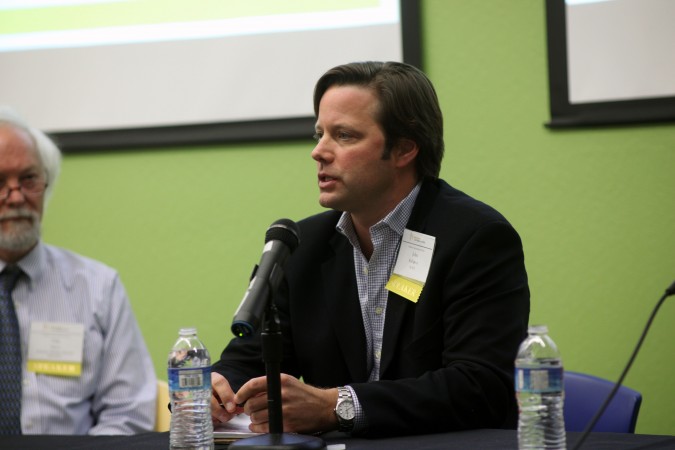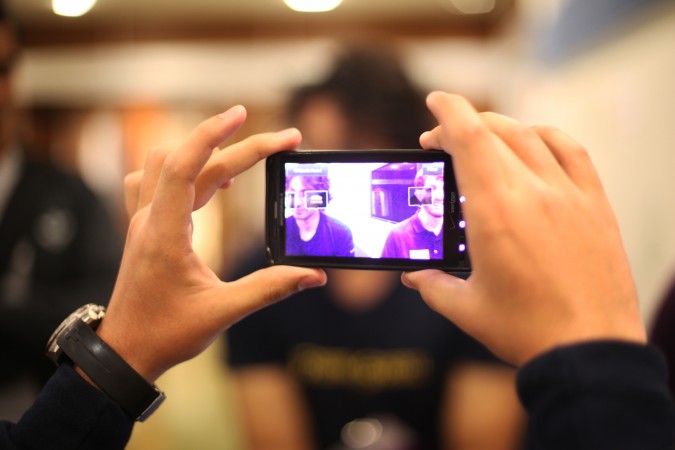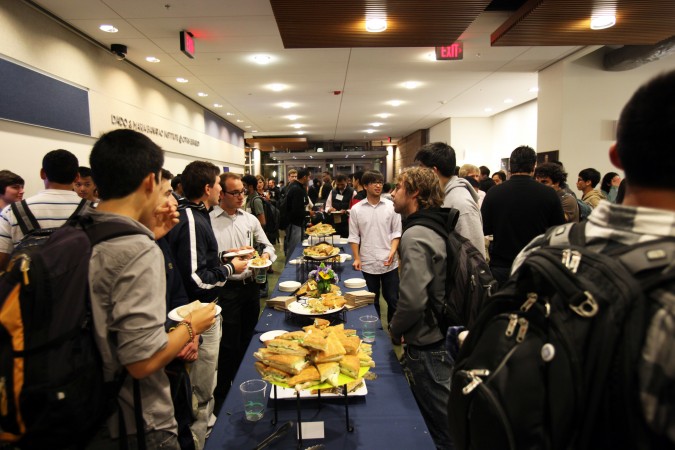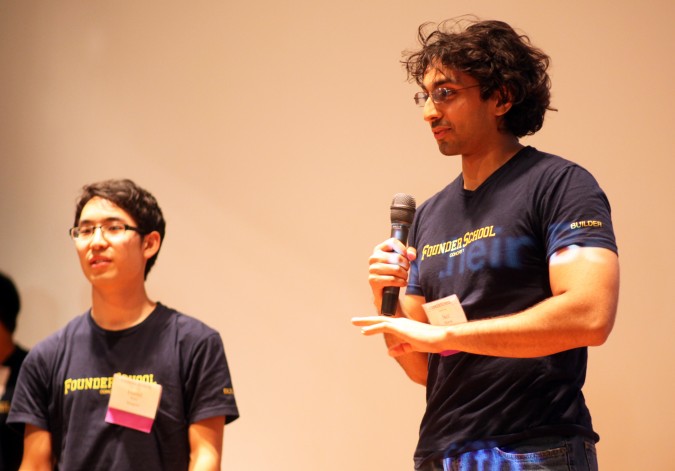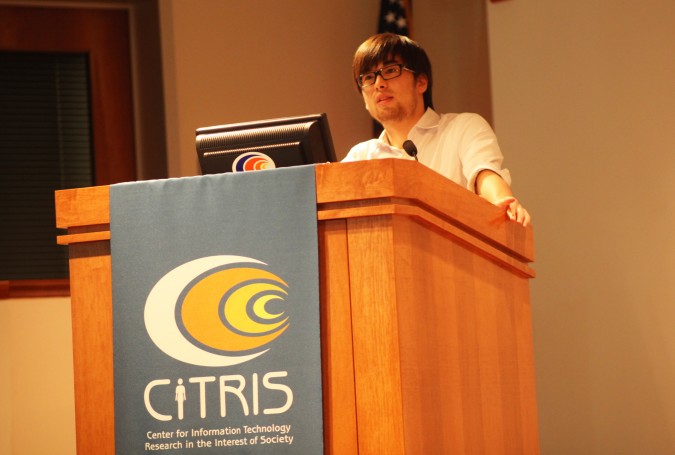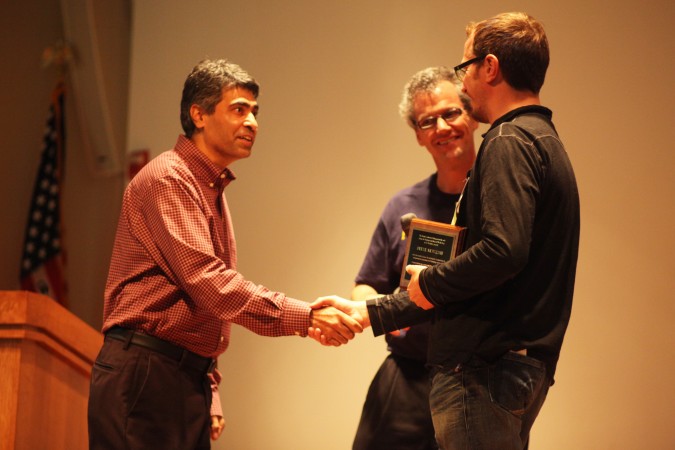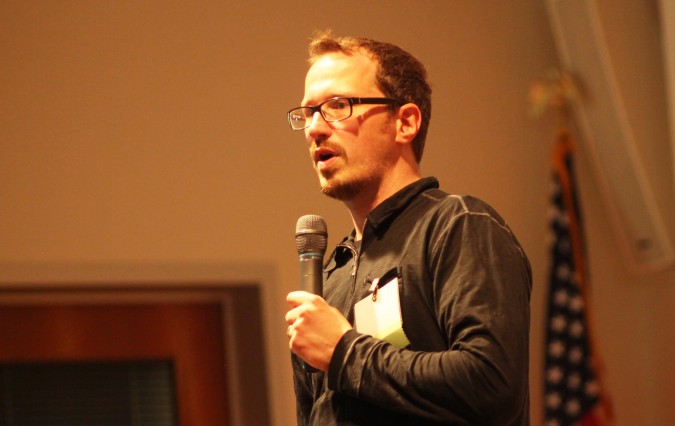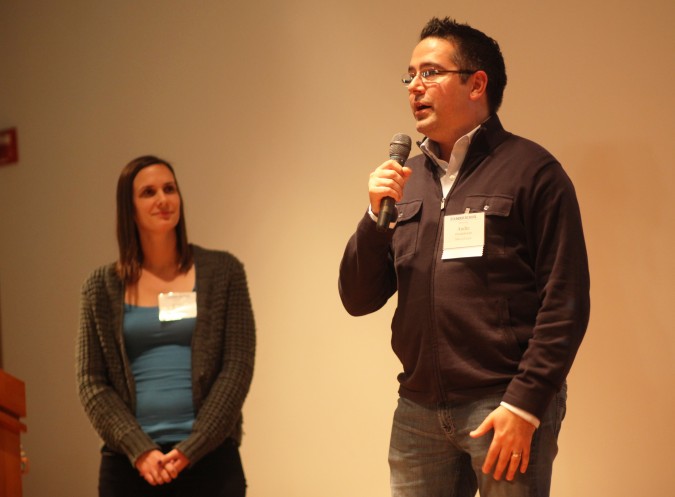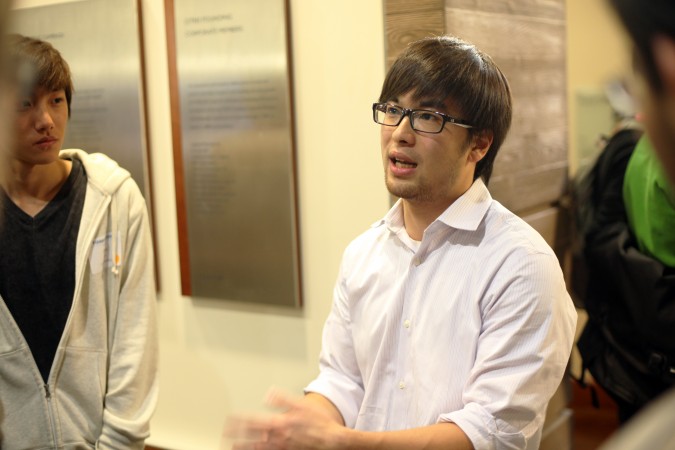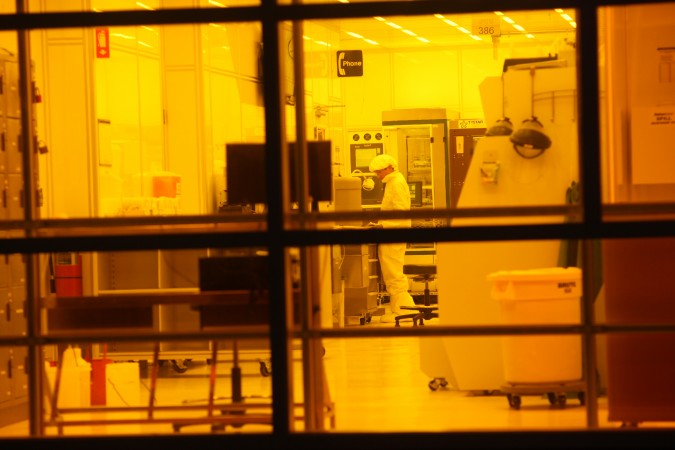Archive for the ‘Andre Marquis’ tag
Intel CEO Paul Otellini is interviewed by Haas School of Business Dean Rich Lyons, October 3, 2012 at University of California Berkeley

Intel CEO Paul Otellini at University of California Berkeley, October 3, 2012. Photograph by Kevin Warnock.
Yesterday afternoon, Wednesday, October 3, 2012, I attended the Dean’s Speaker Series at the Haas School of Business at the University of California Berkeley, in Berkeley, California USA.
Dean Richard Lyons interviewed Paul Otellini, the Chief Executive Officer of Intel Corporation. The question and answer session was held in the Anderson Auditorium, a venue I am very familiar with because it’s the same hall where the Berkeley Entrepreneurs Forum is usually held. I have attended the Forums for 20 years.
The interview was captured by a professional videographer, and the video will be soon made public on the Haas website page for the Speaker Series.
I have highlighted my favorite parts of Otellini’s remarks in my comments that follow.

Haas School of Business student asks Intel CEO Paul Otellini a question October 3, 2012 at University of California Berkeley
Otellini completed his undergraduate studies at University of San Francisco, and received his Master of Business Administration from the Haas School of Business, though at the time it was named the Berkeley Business School. Otellini got a job at Intel in 1974 with his freshly minted MBA degree. Even though Otellini was a finance specialist, his first job at Intel was to program a Digital Equipment Corporation PDP-10 minicomputer to perform cost analysis. This must have been an intense introduction to Intel for an MBA because mini-computers were not easy to program. I programmed a Digital Equipment Corporation VAX minicomputer in 1990, and it was difficult then, so I can only imagine how much more pesky and complicated it was to work 16 years earlier on the ancestor to the VAX.
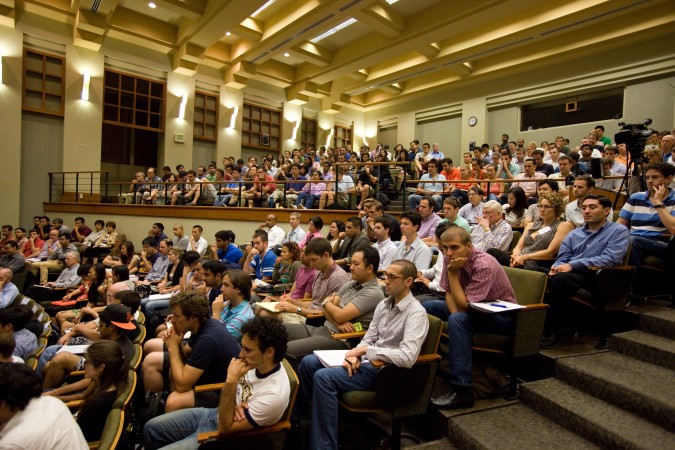
Audience watches Rich Lyons interview Intel CEO Paul Otellini, October 3, 2012 at University of California Berkeley, in Berkeley, California USA
When Otellini became CEO in 2005 he assessed that Intel was not organized correctly for where he saw the market heading. At the time, Intel had 105,000 employees. Otellini eliminated 25,000 jobs. The company is today back up to 103,000 employees. His advisers in 2005 were asking why he wanted to go into ‘the phone business’ when Intel was making money hand over fist at the time. Otelllini said he had many sleepless nights when he was contemplating letting 25,000 people go. He said he will never feel good about that, but he is grateful that he made the change well before the world financial collapse of 2008, so all the people let go were able to find jobs quickly.
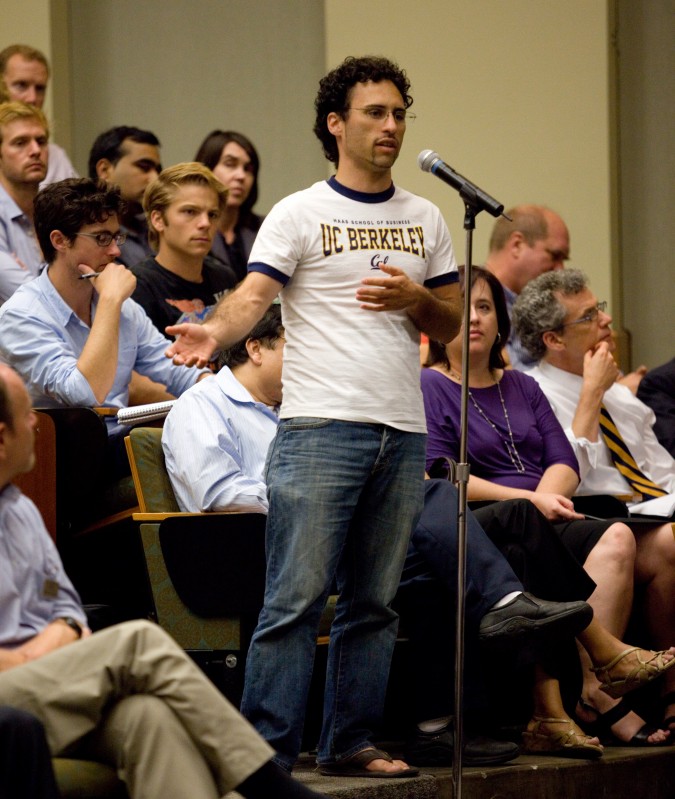
Second year Haas student Michael Vladimer asks Intel CEO Paul Otellini a question, October 3, 2012 at University of California Berkeley. To the right of the student, seated: Jill Erbland and Andre Marquis.
I was surprised to learn that Intel is the world’s 4th largest software company in the world based on the number of computer programmers that it employs.
Otellini advised to get work experience in different geographic locations prior to starting a family.
Otellini said its chips are manufactured in three dimensions, which was forced upon it by the laws of physics, which prevented circuits from being made much smaller. To keep making more capable chips, transistors had to be stacked as well as placed side by side. This technology took Intel 10 years to perfect, with thousands of PhD holders working on the effort.
I wonder if they considered adding a ‘Now in 3D!’ tagline to their famous ‘Intel Inside’ stickers.
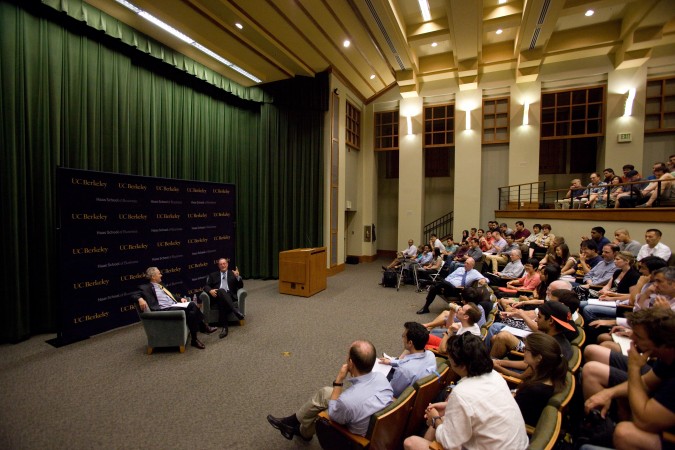
Audience watches Rich Lyons interview Intel CEO Paul Otellini, October 3, 2012 at University of California Berkeley
Otellini emphasized the high risks inherent in running Intel.
To illustrate, when Intel breaks ground on a new chip fabricating factory:
- the technology hasn’t been developed yet
- the products haven’t been designed yet
- the markets for the products don’t exist yet
These factories take 3 1/2 years to build and cost USD $5,500,000,000 each, and Intel starts construction on two or three of these per year.
That sounds like a great definition of high risk to me.
Intel makes hardware reference designs that it provides to its customers so that they can get products to market more rapidly. Otellini said personal computer makers don’t spend that much on industrial design, so they like and need Intel to provide these turn key designs they can modify to make them unique.
Otellini had a mentor at Berkeley while he was a student in the early 1970s. That mentor worked at Bank of America, and tried to get Otellini to join that bank. Several years after Otellini had joined Intel, his mentor confided that Otellini had chosen the right company.
Intel has put in place a system where they can identify the source of so-called conflict minerals. They can also track them, and Otellini said that Intel is likely to be able to say by January 2013 that Intel has built the world’s first ‘conflict mineral free microprocessor’.
Otellini said he had spoken in the morning with Robert Hormats, Under Secretary for Economic, Energy and Agricultural Affairs at the Department of State, who he said is very interested in [removing] conflict minerals from products. The Department of State, according to Otellini, wants to make Intel’s conflict mineral tracking system a so-called ‘best known method’ for the [semiconductor] industry.
Otellini said it recycles the chemicals used in its plants, and plans to recycle the water it uses to such a complete degree that its factories will be able to reuse the water they consume over and over, without needing to return it to the underground aquifers, like they do today.
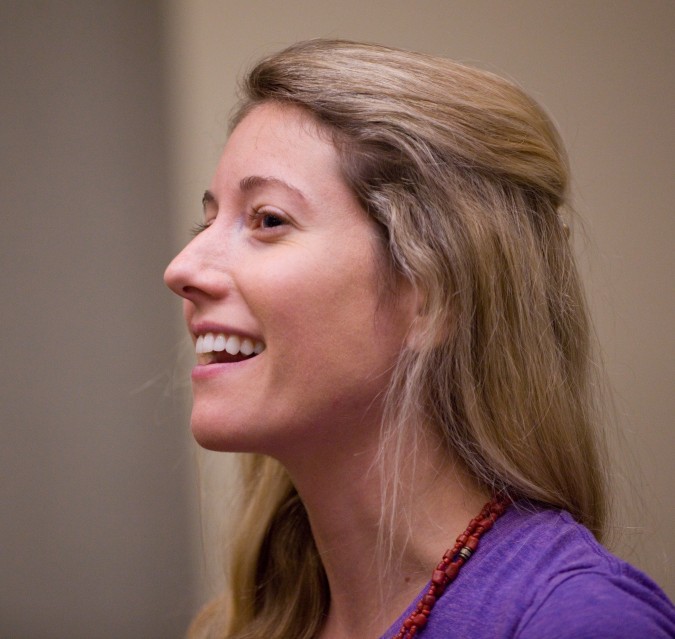
Audience member at Dean's Speaker Series with Paul Otellini at Haas School of Business, October 3, 2012.
Otellini spoke about manufacturing competitiveness generally in the United States, something he is qualified to speak about because he advises United States President Barack Obama about competitiveness.
He said many of the motivating factors that have led to outsourcing are disappearing. He said that it costs more for Intel to hire 1st and 2nd level technical managers in China now than it does in Santa Clara, California USA. For engineers with 3 or 4 years of experience, the costs to hire them are now the same in the US as they are in China and India.
Otellini said that the United States could improve its position by lowering its corporate tax rate [to a level consistent with the rate in competitive economies]. He suggested the US streamline its permitting procedures for building new factories. He suggested that job training be improved to provide a skilled workforce to work in the new factories. He pointed out that currency and political risks are low in the US, and stated there is no risk of a company’s factory being expropriated by the US government. In other countries, governments sometimes do take over privately owned factories.

Paul Otellini speaks with Arthur Gensler at University of California Berkeley, October 3, 2012. Photograph by Kevin Warnock.
There were some famous guests in the audience.
Perhaps the most famous attendee was Arthur Gensler, the founder of M. Arthur Gensler Jr. & Associates, Inc. but commonly referred to as simply Gensler. I have been aware of this global architecture, planning, design and consulting firm since I was 23 years old at my first job out of college, at Newell Color Laboratory at 630 Third Street in San Francisco, California USA, since closed. Gensler was an important client. I suspect Gensler may be helping to design the new building Dean Lyons is being planned for the Haas School of Business campus.

Arthur Gensler speaking with Paul Otellini, October 3, 2012 at Haas School of Business at University of California Berkeley
After the interview, Lyons pointed out Mr. Gensler to me — without his helpful comment, I would not have been able to write this acknowledgment of his visit. Gensler is a big deal — they employ 3,500 people in 42 locations. They count all 10 of the Fortune 500 top 10 companies as clients.
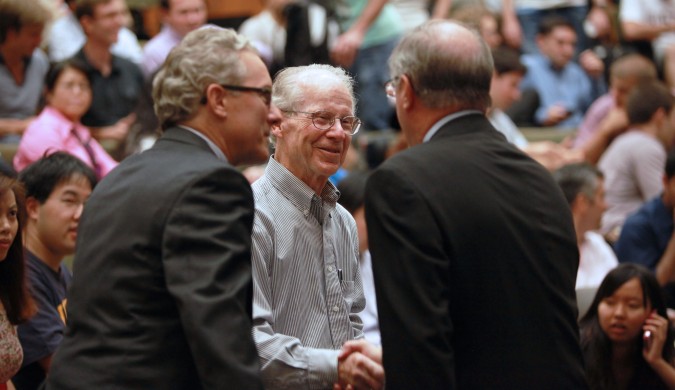
Haas School of Business Dean Rich Lyons, left, watches Haas Professor Emeritus and Nobel Prize winner Oliver Williamson shake hands with Intel CEO Paul Otellini at Haas School of Business at University of California Berkeley, October 3, 2012. Photograph by Kevin Warnock.
Perhaps the second most famous attendee was Oliver Williamson. Williamson is Professor Emeritus at the Haas School of Business. In 2009 Williamson won the Nobel Prize for Economics. I saw Williamson speak in 2009 at the Haas Gala, the annual party the school throws each November. I blogged about that gala and wrote about Williamson, who spoke at the event. I took a picture of Williamson shaking hands with Otellini, shown here.
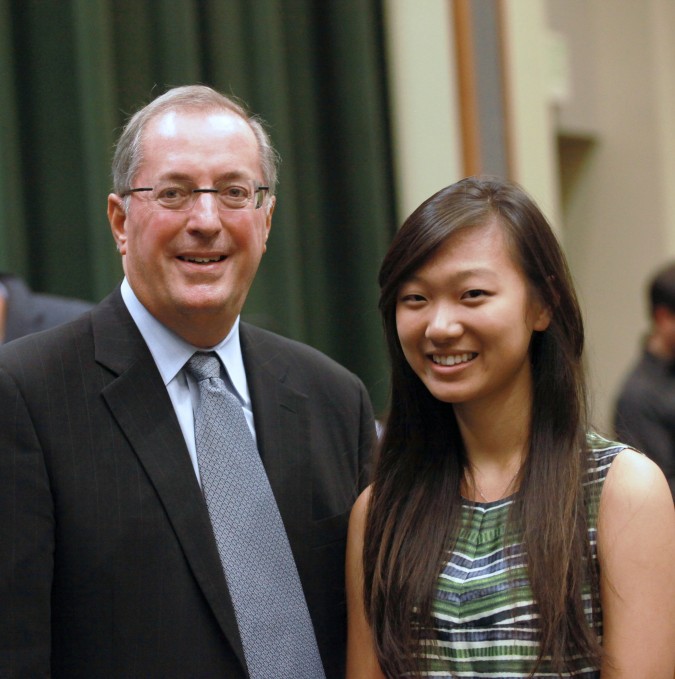
Intel CEO Paul Otellini with University of California Berkeley student Tammie Chen. Photograph by Kevin Warnock, October 3, 2012.
This last photograph of Mr. Otellini with Berkeley undergrad student Tammie Chen has an interesting story behind it.
I met Chen when she was an organizer for the 2011 Made for China Startup Pitch Competition. I was a judge for that competition. After that event, we became friends on Facebook, and she posted that she was going to be attending the Dean’s Speaker Series that is the subject of this blog post. I commented that I would be there as well, blogging. She asked me if I could take a picture of her with Otellini. I said I would. I walked up to him and asked him if I could introduce Chen to him and take a picture of him with her, and he readily agreed. They had a nice chat for a minute, and then they posed for this picture. Chen is a huge fan of Intel, and has visited their headquarters. She has a lot of friends that work at Intel.
I was surprised that no students approached Otellini to introduce themselves. This is the same behavior I saw at my first Dean’s Speaker Series event, in September 2012, when Lyons interviewed Randall Stephenson, the CEO of AT&T. There were students standing about 10 feet away from Otellini, in a large circle, but not a single student walked into the empty space to say hello. That made it easy for me to say hello to Mr. Otellini, who I have met and spoken with before, in 2008, at the Intel Capital CEO Summit [renamed the Intel Capital Global Summit] in San Francisco.
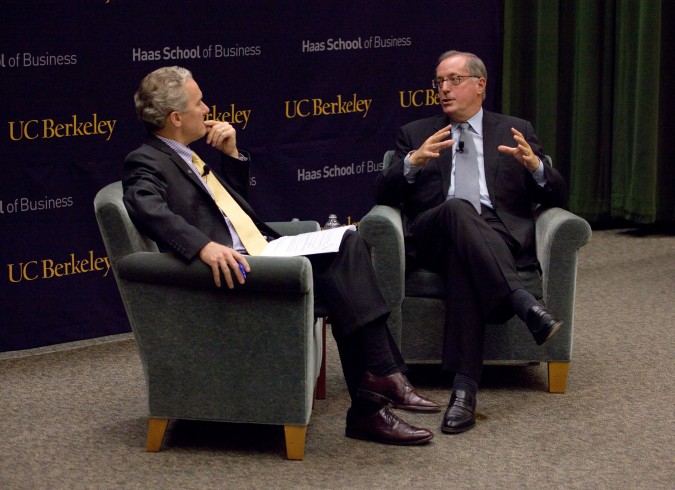
Haas School of Business Dean Rich Lyons and Intel CEO Paul Otellini, October 3, 2012 at University of California Berkeley. Photo by Kevin Warnock.
I like Intel. Their venture capital division Intel Capital was very nice to my company Silveroffice, Inc. by making it an Intel Capital Portfolio Company. Intel Capital invites me as their guest to Intel’s annual Intel Developer Forum, at which I get a new Intel Developer Forum branded laptop bag or backpack, which I use every time I leave my home with my Intel powered laptop. I hope to be appointed a judge for the Intel Global Challenge, a role I would be great at since I was a judge for the Berkeley Startup Competition for eight years through 2011. My application is pending, so please wish me luck! I love judging startup competitions, and so far I have judged four different competitions at University of California Berkeley.
I took all the photographs in this post. I used a Canon 5D Mark II camera with a Canon 80-200mm f:2.8 L zoom lens. Click on the images twice in delayed succession to see the images at full size. I uploaded the images at their full 21 megapixel resolution, at a JPG quality of 12. The light level was comparatively low, so I shot at ISO 2,500, without flash.
Thank you to Meg Fellner of the Dean’s Office for getting me a ticket to this sold out event.
Berkeley Entrepreneurs Forum, 2012-13 Angel & Venture Capital Financing Overview – August 30, 2012

The Berkeley Entrepreneurs Forum, August 30, 2012, held at Stanley Hall, room 105, because Anderson Auditorium was booked
On August 30, 2012 I attended the 2012-13 Angel & Venture Capital Financing Overview at The Berkeley Entrepreneurs Forum.
The August 30th Forum was the first of this academic year. The Berkeley Entrepreneurs Forum is a production of The Lester Center for Entrepreneurship & Innovation at the Haas School of Business at the University of California Berkeley.
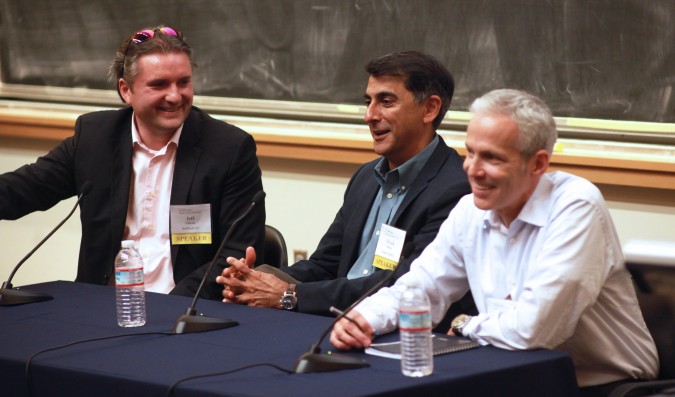
Panelists Jeff Clavier, Vivek Mehra and Jim Barnett at Berkeley Entrepreneurs Forum, August 30, 2012. Photo by Kevin Warnock.
The first Forum of the year for years now starts with Steve Bengston’s presentation of the Shaking the Money Tree report. I suspect Bengston has made this presentation hundreds of times, as he gives it not just at the Forum, but at many venues. In fact, I suspect it’s Bengston’s signature talk.
You can watch the full video of the Forum here to see what happened. I am a photographer, not a videographer. This is not the official video, which The Lester Center will publish in its entirety some weeks from now, I believe. I suggest you watch that version, because it will have professional sound from a mixing board, the slides will likely be full screen so you can read them, and the camera used is far better than the still camera I used that happens to also shoot video. I did not upload this video at full quality, since such video takes far longer to compress for Internet display.
There were some good lines from the speakers. I’ve transcribed my favorites here:
Steve Bengston:
“It [venture capital] finally got big in the mid to late 90s and now we worry when the venture business goes from $30B to $20B, but it never got above $20B until 1998 so the scale of the venture business is just much bigger than it’s ever been.”
“What about Series A, ‘didn’t that collapse?’ It is down certainly from the peak but you can see whatever that is there are $200M to $400M of series A deals each quarter just in Silicon Valley and that represents about 50 to about a 100 Series A deals in Silicon Valley each quarter.”
“The good news is there is a lot of money for your deal if you meet the certain metrics for an investor.”
“If you’re going to raise money which is still hard to do, you’re going to raise around $3M. That’s a typical deal. In this era, that buys you a lot more months of burn than it would have say ten years ago.”
“You have 300 to 400 M & A exits in the US a year in the US, much higher than the old days.”
“The top five or so [venture] firms are raising 80% of the money.”
“It begs the question ‘How many VCs do you need to find the 30 good companies every year?’ Right now the answer is about 3,000. For many people that seems high.”
“China has been the number one economy 15 of the last 18 centuries. So, just because they have had a couple of bad centuries you don’t want to count them out. They are used to being on top.”
Jeff Clavier:
“The challenge at the early stage is that even great founders can come up with really stupid ideas.”
“Do it because you are passionate about it, not because it’s cool.”
“I passed on airbnb that some showed me when it was called air bed and breakfast and I said ‘air bed and breakfast… are you f—ing kidding me?'”
Jim Barnett:
“One of the danger signs that all the partners look for is what we call ‘complexifiers’ — people that take what is otherwise a relatively simple business proposition or business idea and figure out how to make it complex.”
“The one thing I would say to those thinking about starting a company or planning to start a company is just go do it. Your idea really doesn’t need to be that great. It really doesn’t. If you’re great, it will get funded.”
“I want to dispell a myth that you learn more from your mistakes than you do from your successes. I think that is just a bunch of crap. I really do. I think you learn from watching success — pattern matching, whether it’s in sports whether it’s in business or anything else so for those of you that are in the audience that are MBAs or that are undergrads that are thinking about what do if they’re not going to start a company I would say ‘go work for a successful company and watch.’ You’ll learn a lot more than doing three failed startups.”
Vivek Mehra:
“I hate doing deals over the weekend. I have never done one and I hope I never have to do one. It’s just impossible to get to know the entrepreneur.”
“When there are very asymmetric equity assignments amongst the team you know what they really think about each other.”
Here is my succinct summary of this Entrepreneurs Forum:
- The venture industry is in trouble, but there is still plenty of money around.
- Lots of angel investors are making what will prove to be poor investments so this increases the chances that you can raise money even if you or your idea are not that good.
- There is a lot to be gained by just starting a company, so if you are passionate about doing so, then go for it. You won’t ruin your chances for future success by failing a few times.
- However, if you’re not going to start a company, you should work for a clearly successful company so you can pay attention and learn from the success of others.
- Surround yourself with high quality people.
- Don’t make things more complicated than they need to be.
- Have your role worked out with your founders before you pitch to investors. Lopsided equity divisions speak loudly to investors what you think of your co-founders.
- Increase your chances of getting funded by persistently pursuing entrepreneurship over years, so investors may gauge your actions over your words.
- Work hard and recognize that a lot of success may be attributed to your ability to forge healthy and respectful long term relationships with people in the community.

Panelist Jeff Clavier answers questions at the Berkeley Entrepreneurs Forum, August 30, 2012. Photo by Kevin Warnock.
From the Berkeley Entrepreneurs Forum website, here are the introductions for the moderator and speakers — I added the hyperlinks to make it easier for you to learn more about the panelists and their many interests:
Samuel B. Angus
Partner
Fenwick & West LLP
Samuel B. Angus is a partner in the Corporate and Venture Capital Group of Fenwick & West LLP, a law firm specializing in technology and life sciences matters. Mr. Angus is resident in the San Francisco office and his practice concentrates on advising start-up/venture-backed companies, venture capital and debt financings, mergers and acquisitions, intellectual property licensing, joint ventures and general corporate matters. Mr. Angus represents a broad range of companies from privately held start-up companies to publicly traded corporations, including Airbnb, Github, Marin Software and oDesk. His practice also includes advising entrepreneurs and investors.
Jim Barnett
Partner
Shasta Ventures
Jim Barnett is a Partner at Shasta Ventures and has been a highly successful serial CEO and entrepreneur. Jim is currently chairman and co-founder of Turn, chairman of Extole and Sojern, and a board member of Needle and RelayRides. From 2004 until 2009, Jim was CEO, chairman and co-founder of Turn, the leading platform for managing data driven digital advertising. Before that he was president of Overture Search, a division of Overture Services, Inc. Jim joined Overture via its acquisition of AltaVista Company, where he was president and CEO. In this role, he led the company’s successful turnaround and sale to Overture.
Jim was also president of Ancestry.com (MyFamily.com) and president and CEO of ThirdAge Media, which was acquired by Ancestry.com. Prior to that, Jim was president and CEO of Infogrammes North America, a leading global publisher of video games and entertainment software. He was also chairman, president and CEO of Accolade Inc, Infogrammes’ predecessor company, and prior to that was chief operating officer of an “Inc. 100 Fastest Growing Private Companies.”
Jim has served on the boards of many private and public companies including SideStep, Inc. where he was chairman and Petco where he was also an early investor. Jim earned a bachelor’s degree, MBA and J.D. from Stanford University.
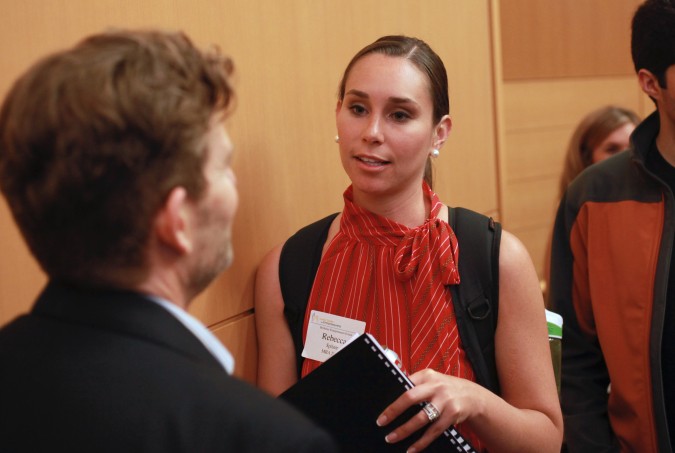
Moderator Sam Angus listens to student Rebecca Spitzer pitch her startup at the Berkeley Entrepreneurs Forum, August 30, 2012
Steve Bengston
PricewaterhouseCoopers
Steve Bengston heads the Emerging Company Services (ECS) group at PricewaterhouseCoopers. ECS acts as “mentor capitalists” for young, high potential companies.
Before joining PwC, Steve had 20 years of experience in a variety of marketing, business development and general management roles at several high tech companies in the Bay Area. Most recently, he was Pres/CEO of ynot.com [Note: not the website now online at that URL], a leading international emarketing and greeting card company. Previously, he was VP Marketing & Business Development at Worldview Systems, an Internet travel pioneer. At Worldview, Steve helped launch and market Travelocity with Sabre Interactive.
Steve has a BA in Economics and MBA from Stanford University. He works closely or sits on the Advisory Board at Churchill Club, SVASE, Life Science Angels, Bay Bio, and the Stanford/MIT Venture Lab, has taught classes on startups at UC Berkeley, San Jose State, Santa Clara Law School, Hastings Law School, and Stanford, and is active in a variety of other organizations in the Bay Area targeting entrepreneurs and investors. He is a frequent moderator/panelist at both university and industry sponsored events.
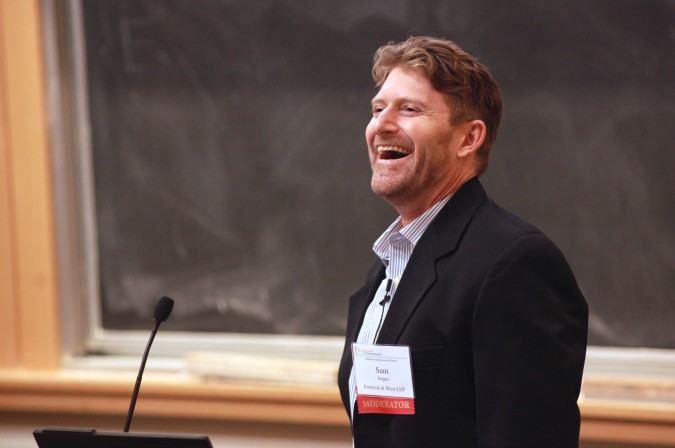
Sam Angus, a partner at law firm Fenwick & West LLP, moderates a panel at the Berkeley Entrepreneurs Forum, August 30, 2012
Jeff Clavier
Founder and Managing Partner
SoftTech VC
Based in Palo Alto, California, Jean-Francois “Jeff” Clavier is the Founder and Managing Partner of SoftTech VC, one of the most active seed stage investors in Web 2.0 startups. Since 2004, Jeff has invested 125 consumer internet startups (Fund I, Fund II, Fund III) in areas like social media, monetization, search, gaming or B2B/B2C web services. These investments are typically located in Silicon Valley, New-York and Boulder. With over 20 years of operational, entrepreneurial and venture capital experience, Jeff is able to add relevant perspective and value to his companies as they grow from inception to maturity, and hopefully, success.
Jeff was recognized as one of the 13 “Web 2.0 King Makers” by (late) Business 2.0. BusinessWeek named him one of “The 25 Most Influential People on the Web” in 2008, and one of the “Top 25 Angels in Tech” in 2010. He was also nominated in the “Best Angel” category at the Crunchies in 2009 and 2010. He is often noted for his investments in categories such as “passion-centric communities” or online gaming, or for having sold a number of his Web 2.0 startups to the likes of Yahoo, AOL, Intuit or more recently PayPal, Twitter and Groupon.
Some of Jeff’s representative investments include Mint (Intuit), Brightroll, Truveo (AOL), Userplane (AOL), Rapleaf, Ustream, Milo (eBay), Blekko, Eventbrite, Tapulous (Disney), DNANexus, FanBridge, BillFloat, Fab, Gigwalk, Byliner and Wildfire.
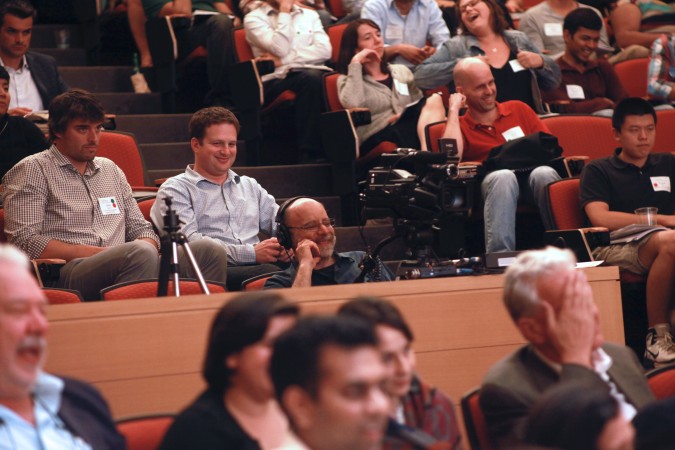
Stuart Sweetow, owner of Audio Video Consultants, capturing video at the Berkeley Entrepreneurs Forum, August 30, 2012
Vivek Mehra
August Capital
Vivek joined August Capital in 2003. He invests broadly in IT infrastructure and areas of interest include data center technologies, systems management, security, storage, and cloud computing systems and software. Prior to joining August Capital, Vivek co-founded Cobalt Networks in 1996. As CTO & VP of Product Development, Vivek built the first successful server appliance and grew Cobalt into a worldwide leader in the category, culminating in a successful IPO and acquisition by Sun Microsystems for $2B. At Sun, Vivek served as the Vice President and General Manager of the Cobalt Business Unit and a member of Sun’s Technical Architecture Council. Prior to founding Cobalt, Vivek held a number of technical and management positions at Apple, SGI, and Digital Equipment Corporation and successfully developed numerous products including Internet enabled set-top boxes, PDAs, RISC workstations, and high performance graphics subsystems.
Vivek received a BS in Electronics from Punjab University, India, and an MS in Computer Engineering from Iowa State University.
To my knowledge, I have been attending The Berkeley Entrepreneurs Forum for longer than anyone else besides Jerry Engel, who founded The Lester Center in 1991 and was its Executive Director for nearly two decades.
I have some suggestions to improve the The Entrepreneurs Forum, which I will describe here. I am posting these suggestions publicly because they are likely applicable to numerous programs across the globe, and I’d like to see these ideas adopted widely if people think they are worthwhile.
1. Dispense with the table panelists sit at. The table doesn’t look good on camera or video, and over time the majority audience for the Forum should be watching online, since the rooms frequently sell out already. Panelists should sit on arm chairs or couches, like they do at most tech conferences that I attend. The moderator should sit with the panelists and not be off to the side standing at a podium. All the people on stage should be outfitted with wireless lapel microphones. I would like the Forum to appear more conversational in style. The table separates the speakers from the audience, where arm chairs suggest a residence for a more intimate vibe.
Here’s an example of a more visually appealing way to run a panel. Steve Bengston is the moderator for this panel at The Churchill Club, where he is a member of its Board of Directors and its past Chair.
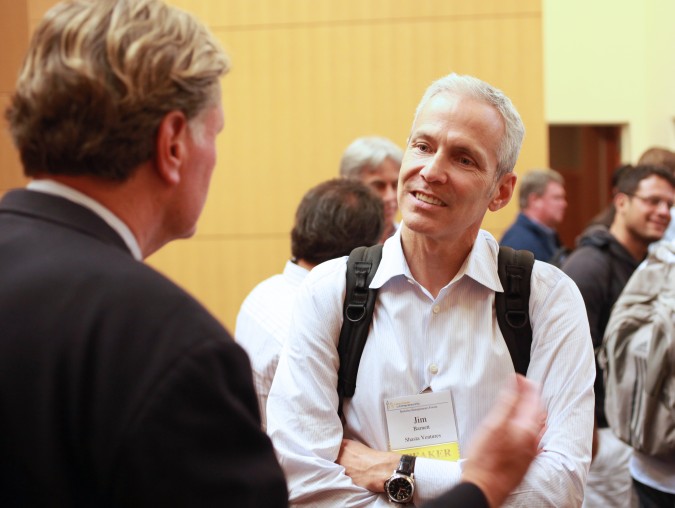
Jeff Burton, the brand new Executive Director of the UC Berkeley Skydeck, talks with Jim Barnett of Shasta Ventures, August 30, 2012
2. Commercial bottled water should be forbidden on stage, even if the speakers bring it with them. Nearly all the conferences I attend serve water from pitchers into real glasses. Bottled water is an evil product, and it looks bad in photographs and video to see those bottles. Image is important, and promoting bottled water by showing it on stage should stop.
3. Commercial bottled water should not be a beverage choice during the networking hour. Tap water should be offered, and it should not require a drink ticket.
4. When it comes time for audience questions, invite the questioner to sit on stage in an arm chair or on the couch while they ask the question and while they are receiving the answer. This will give the questioner time on video, and will permit them to look the speakers in the eye. This will be a treat for the audience members, because they’ll feel they get to ‘meet’ the panelists for 60 or 120 seconds. Questioners can line up to get their turn on stage. Questioners should be encouraged to state their first and last name, so they can be identified online.
5. Although I appreciate that it’s a lot of work, the Forums should be transcribed, and the transcribed text should be posted online. This is a certain way to get more traffic to The Lester Center website, and it’s likely to increase the interest in the Forum from attendees that can’t attend in person.
6. All Forums should be archived online, including Forums from ten and twenty years ago. Forums should never expire and be removed.
7. The ‘numbers’ should be videotaped and included in the online video. The numbers are often the most interesting part of the evening. The contact information for the number presenters should be posted online, with permission of course, and there should be a hyperlink to the project the person is working on.
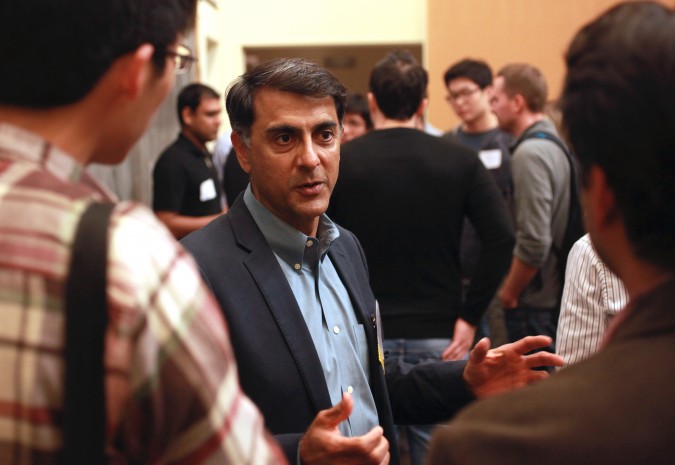
Vivek Mehra, a partner at August Capital, answers questions posed by attendees at the Berkeley Entrepreneurs Forum, August 30, 2012
8. The photographs taken by Bruce Cook, the official photographer, should be publicly posted to Facebook, and should be tagged. Once the identities of the people pictured are known via the tagging, the captions for the official Lester Center website should be updated to identify everyone whose name is known. If required, change the terms of the tickets purchased to give UC Berkeley the right to identify the people by name. Offer an ‘opt out’ list during checkin. Having the names with the pictures will increase traffic to The Lester Center website, since people will search for those names for decades to come. Invite people to tag the pictures in the emails The Lester Center sends out and via Facebook status updates.
9. A vast collection of at least 5,000 of Bruce Cook’s unpublished photographs of the Forum from the last twenty years should be published to Facebook and the Web, and they should be tagged and captioned. This was entirely my idea — Cook did not hint that I propose such an idea. The majority of the pictures published should be of the networking hour, to get as many people from the audiences over the years tagged as possible.
10. The Forum should be oversold, like airplane seats. This August 30th Forum was ‘sold out’ but there were unfilled seats in the auditorium, which takes away from the excitement of a sold out show. If too many people show up, they can watch on video monitors in the Bank of America Forum, and as compensation for not getting a seat, their entrance fee can be 100% refunded. I predict the revenue over time from overbooking will more than make up for the refunds that need to be given. Attendees should be told when they buy their tickets they risk being bumped, and encouraged to arrive early to be sure they get a seat.
11. The reminder to ‘Like’ The Lester Center on Facebook should be repeated on a poster displayed during the Forum. The Forum’s Twitter handle should also be on this poster.
12. Attendees should be given a perk if they follow the Forum on social networks, such as a second drink ticket on their next visit to the Forum, to encourage getting as many followers as possible. Currently attendees may eat unlimited quantities of food at the Forum, but are permitted only one drink, either with alcohol or without.
13. Attendees should be invited to blog and post about the Forums, and The Lester Center site should find and link to the best examples of such efforts, to encourage people to write about the Forum.
I am one of the only bloggers writing about the Forum, but there should be at least several.
14. I love the luxurious food served during the networking hour, but it sure seems like it must cost a fortune. I think it would be more than fine to switch to less fancy food. There is precedent for this. Last year at the Founder School Demo Day what appeared to be inexpensive sandwiches were served, but the event was superb and not diminished by the more everyday food. I suspect the food budget for the Forum could be cut by two thirds without getting more than a handful of complaints. The Forum is still too expensive at USD $25 a ticket, and I bet it loses money even at that price. When I started attending in my mid twenties, the cost was prohibitive. It was only due to my getting free tickets from my employer at the time, Cooley, that I attended regularly. The goal should be to get lots of currently poor entrepreneurs in the making to attend, including but not limited to Berkeley students.
I suggest the price should be no more than $10. To get the price that low, I suggest alcohol should cost extra.
That is all my suggestions for now. The Forum is already a success, or I would not have attended for twenty years. I am trying to make the Forum better.
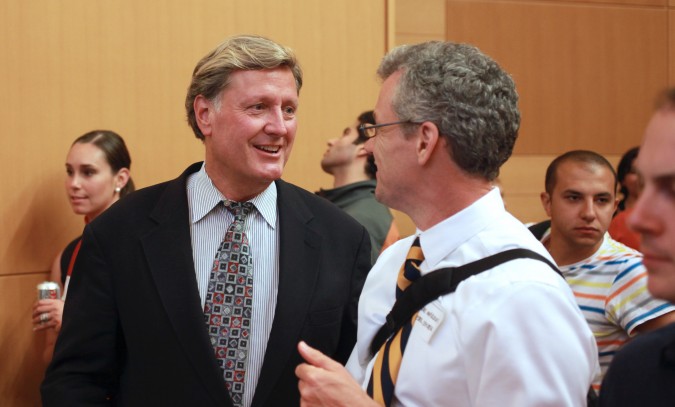
Jeff-Burton, left, the brand new Executive Director of the UC Berkeley Skydeck talks with Andre Marquis, Executive Director of The Lester Center for Entrepreneurship & Innovation, August 30, 2012. Photo by Kevin Warnock.
I upload pictures to this blog at the maximum resolution my camera produces — 21 megapixels. Click on them twice in delayed succession to see them at full size. I shot these pictures at ISO 4,000 due to the low lighting levels.
Click here to see all the posts I have written about the Berkeley Entrepreneurs Forum.
The law firm Fenwick & West LLP where Sam Angus is a partner produced and gave away a great 80 page booklet at the Forum. Retired Fenwick attorney Jacqueline Daunt wrote a fantastic introduction to startups that includes a capitalization table for a hypothetical company from pre-funding stage through a public stock offering. Thank you Fenwick! If I can post this booklet, please let me know and I’ll update this post with a link to a PDF scan of the booklet.
Finally, as an end note, I met Steve Bengston in 1999 during the first dot com boom, when he agreed to help me with Hotpaper, my startup at the time. It turned out I didn’t call on him much, since I lined up financing almost too easily, but I will never forget pitching him at his PriceWaterhouseCoopers office in San Jose, California USA, and him telling me at that meeting that he would help me. Bengston is well known, and I was thrilled to have his support, especially back then when I didn’t know many people or know much of anything.
I meet the Picatcha.com team at the University of California Berkeley Skydeck startup accelerator
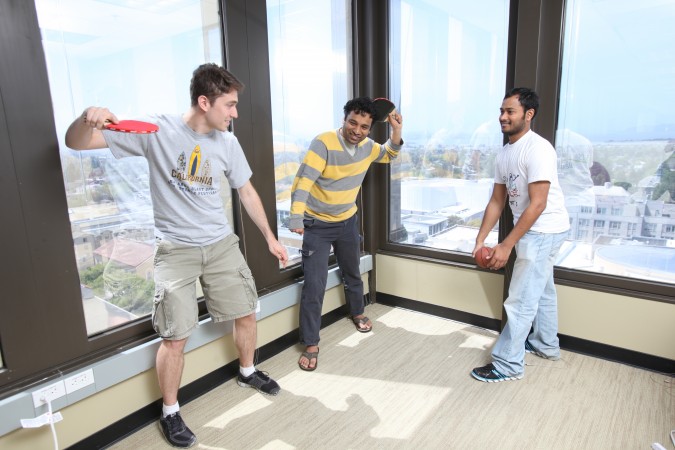
Picatcha.com team playing ping pong with a basketball. May 2, 2012, at University of California Berkeley Skydeck startup accelerator. Photograph by Kevin Warnock.
On May 2, 2012 I met with Satish Polisetti, Dhawal Mujumdar and Sean Carey of Picatcha.
Picatcha is a made up word combining ‘picture’ and ‘Captcha.’
Captcha stands for Computer Automated Public Turing Test to tell Computers and Humans Apart. Captchas were invented by researchers at Carnegie Mellon University.
Even if you don’t recognize the word captcha, you know the test. Here’s an example of Captcha used by Facebook [where I encourage you to subscribe to my posts]:
This Captcha was posted to the photo sharing site Flickr because the first word is difficult to read. You can see Flickr user Chance Abbatoir couldn’t make out the word and wrote wtf? in its place. Wtf is short for ‘what the fuck’ for my readers who aren’t familiar with this slang term.
This illustrates the problem Picatcha is trying to solve.
Regular Captchas similar to the example from Facebook here are too easy for computers to figure out. That allows bad guys to do things they should not do, like buy hot concert tickets as soon as they go on sale, bumping out actual people by overwhelming the websites where the tickets are sold, such as at TicketMaster and Live Nation. The ticket sites assume the buyers are legitimate because the Captchas are correctly deciphered. As a result, more concert goers have to buy their tickets at inflated prices on the secondary market.
In response to such fraud against web properties, traditional Captchas are getting more difficult for humans to solve, such as the one shown here from Facebook. I suspect it says ‘N 1/4’ but I can’t be certain. Can you?
Computers and software are improving. There’s an arms race between conventional Captcha writers and the bad guys. The bad guys are winning.
Picatcha has a different approach.
Picatcha presents a challenge that’s currently difficult for a computer to solve.
The Picatcha twist is that users are asked to look at a set of images and identify the subset that matches a word. For example:
In this example the user has to click on the two middle pictures on the top row, and the second and last picture on the second row. Teaching a computer how to solve this puzzle is much harder than training optical character recognition software to decipher regular Captchas, according to Picatcha. Think about it from the computer’s perspective… the Picatcha way requires machine vision to identify arbitrary objects. OCR only has to deal with 26 letters and 10 digits. A computer trained to break Picatchas would have to handle a vast array of images, which could be crude line drawings up to detailed color photographs.
Picatcha does a lot of other things that make it more compelling than what I’ve so far described.
They allow customers to use images of their products in their picture captchas. Imagine how this would thrill consumer product companies. Imagine how personal this makes the test for users. Suddenly the access tests can become fun, not irritating.
You solve Picatchas by clicking or touching, not typing, making them much more friendly to solve from smart phones and tablets.
There’s extra tricky security happening under the covers, I was told, so this is not a quick programming project to duplicate.
Even more compelling is the Picatcha system can vary the images depending on who the user is. That’s right, the system can tap into your location and demographic data that Picatcha has access to via commercial ad serving services. This strikes me as a brilliant way to enhance user satisfaction and make it more likely they’ll sign up for or buy whatever is behind the Picatcha.
I am impressed with Picatcha. So were the semi-final round judges for the 2011 University of California Berkeley Business Plan Competition, hosted by The Lester Center for Entrepreneurship & Innovation and led by Executive Director André Marquis. Picatcha competed in that competition in 2011 and advanced to the elite final group of eight teams [Note to the Berkeley Business Plan Competition organizers: Keep these links valid in perpetuity. Right now it appears only two years of winners are identified at your site. All winners and finalists back to the 1999 inception of the competition should be listed. Thank you.]. Picatcha collected a cash prize for their efforts. It’s very, very difficult to advance to the finals in that competition… I know as I was a semi-final round judge in that competition. I was not a judge for Picatcha, as I served on the Products & Services track, and Picatcha competed on the Information Technology & Web track. I did not meet the Picatcha team last year at the finals, as I was not yet a tech blogger.
Picatcha started as a school project for Co-Founders Mujumdar and Polisetti when they were students at the School of Information at University of California, Berkeley. They described their work in an attractive summary report. Their Advisor was Bob Glushko.
Picatcha is a hosted service, so its customers don’t need to install any software on their web servers. According to the front page of the Picatcha website today, the company has served up over four million access tests so far, on over 200 customer websites.
When I was meeting with Co-Founder Dhawal Mujumdar last week, he showed me the Picatcha implementation for a brand so famous you are all but certain to have heard of it if you live where their product is sold — M & Ms, the chocolate candy from Mars that melts in your mouth, not on your hands.
Picatcha is sharing office space with other impressive startups at Skydeck, the startup accelerator at University of California at Berkeley, in Berkeley, California USA. I met the Picatcha team after I informed Eliot Sun from Kloudless, Inc. that I’d like him to introduce me to another team, as I had time before my next meeting, and I wanted to be productive. I’ve wrote about Kloudless yesterday, May 7, 2012. I took the pictures for this post. Click on them to see them at full 21 megapixel resolution. There are many more good shots of the Picatcha team playing basketball ping pong in a public album on my Facebook page.
2012 Berkeley Startup Competition Finals at University of California Berkeley
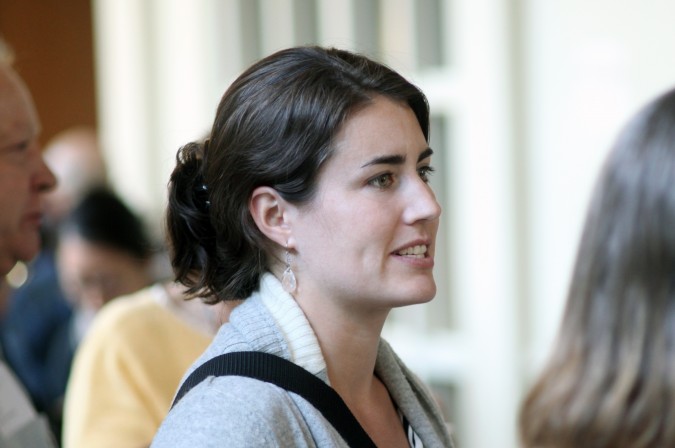
Kate Garrett, co-founder of Calcula Technologies, Grand Prize winner of the 2012 Berkeley Startup Competition, April 26, 2012
On Thursday, April 26, 2012, I attended the Berkeley Startup Competition Final Awards Ceremony at the Anderson Auditorium on the campus of The Haas School of Business at the University of California at Berkeley. Here is the PDF format file of the 2012 Berkeley Startup Competition Final Awards Ceremony program booklet that was handed out at the final awards ceremony.
There are many people mentioned in the booklet, like the Co-Chairs for the 2012 competition, Nick Nascioli, Adam Sterling and Tom VanLangen, as well as Lester Center Executive Director Andre Marquis and Haas School of Business Dean Richard Lyons.

Grand Prize winner Calcula Technologies at the Berkeley Startup Competition, April 26, 2012. Left to right: Nick Mascioli (co-chair of the Competition), Adam Sterling (co-chair of the Competition), Kate Garrett, Dan Azagury, David Gal, Buzz Bonneau, Tom VanLangen (co-chair of the Competition)
I most recently wrote about the announcement of the finalists for this competition, which happened two days earlier, on April 24, 2012.
Calcula Technologies won the Grand Prize and the Life Sciences Track for their clever system that vacuums kidney stones out of a patient’s urethra in just ten seconds. According to the team’s presentation, doctors today let stones pass from the body naturally and often quite painfully unless they are larger than 10mm in diameter. Patients today are often in such agony that they visit the emergency room, which racks up hundreds of millions of dollars in charges per year. For the sub 10mm stones, doctors just write prescriptions for narcotic pain killers and send the patients home with the stones still on their excruciating slow path out.
In the future, when and if Calcula gets their system approved by regulators, patients could have a catheter inserted into their urethra and the stone could be sucked out in seconds, presumably at great relief to the patient. This work could be done at the office of a urologist, without surgery, and the Calcula team said there is already a prized and lucrative reimbursement code in existence in the insurance industry, so if they build this system, they will be able to get paid and make a profit. I can understand why Calcula Technologies won the grand prize. Kidney stones are no fun, I’ve heard, and this system seems very appealing. The team showed a video of a fake kidney stone being sucked out of a pig’s urethra in just 10 seconds. It was very impressive and very memorable.
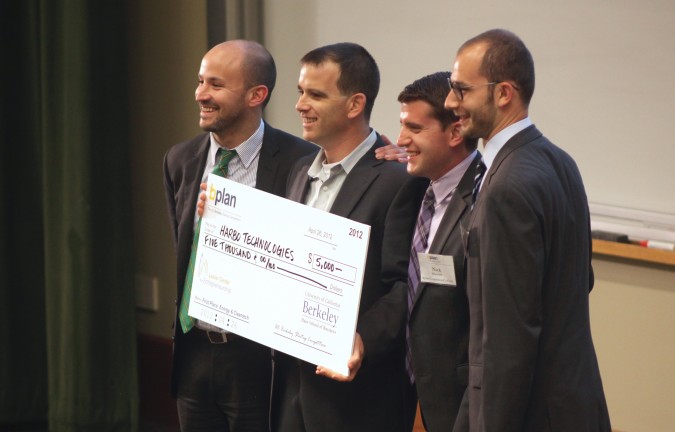
First Place Energy and Cleantech winner Harbo Technologies at the Berkeley Startup Competition, April 26, 2012
Kloudless, Inc. won first place in the Information Technologies and Web Track. I am going to be interviewing Kloudless, so I’ll save my remarks for another blog post.
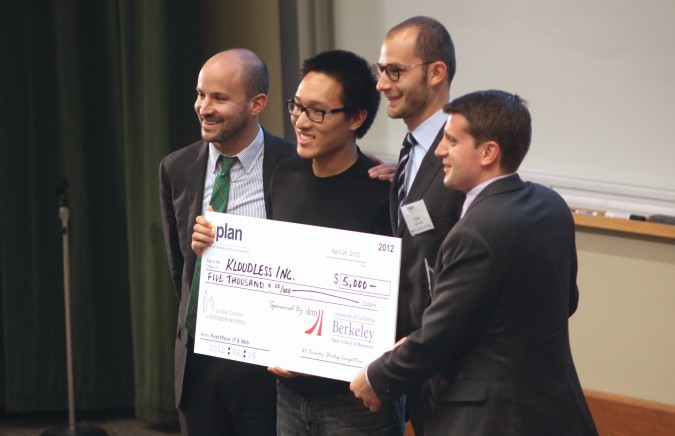
First place IT and Web Track winner Kloudless, Inc. at the Berkeley Startup Competition, April 26, 2012
Like Calcula, Back to the Roots (2935 Adeline Street, Oakland California 94608 USA) won two awards. First, they won the Products and Services Track, and then, thanks to real time votes from the audience and viewers of a live stream on the Internet, they won the Peoples’ Choice Award.
I have written about Back to the Roots twice before.
I have one of their products at my house right now. It works.
Back to the Roots collects used coffee grounds from coffee houses like Peet’s Coffee and mixes it with a ‘secret sauce.’ The combination is boxed up and sold at over 1,000 stores in the United States, including at Home Depot and Whole Foods Market. A consumer buys the cardboard box and partly opens it, exposing the insides. The consumer then mists the contents of the box with water using an included spray bottle. After ten days of twice daily misting, the consumer harvests a bountiful crop of oyster mushrooms that have grown directly out of the side of the box. Once one side has been used up, the consumer opens the other side to repeat the growing cycle for a second harvest.
That story has been told thousands of times, including on the CBS Evening News, an influential national newscast in the United States.
During their public presentation, the Back to the Roots team disclosed future plans that I find fascinating. Since this event was public and was streamed live to the Internet, I feel that it’s OK to write about what I learned, as there were no statements that anything said was to be considered secret.
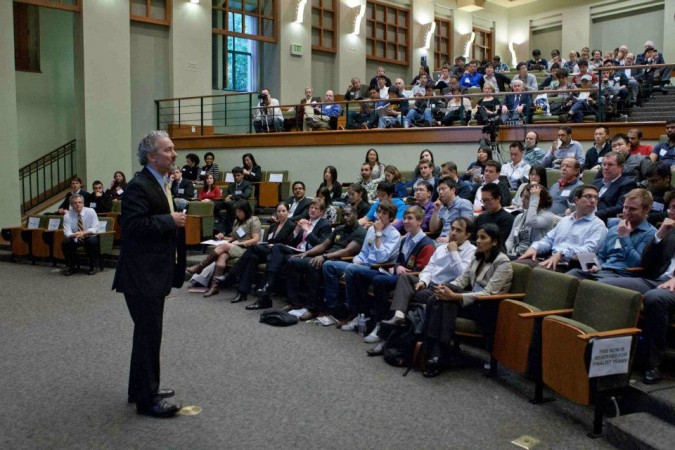
Haas School of Business Dean Richard Lyons speaks at the Berkeley Startup Competition Finals, April 26, 2012. Photograph by Bruce Cook.
The box contents will soon include vegetable plant seeds, and the rest of the box and liner will be biodegradable. Currently, the box is lined with what looks like conventional plastic. My box is from November, 2011, so things today may be different. In the future, or perhaps even already, the box will be lined with either nothing or something else that’s biodegradable. Perhaps what looks like conventional plastic to me is really biodegradable plastic, like some plastic trash bags are made of.

Venture capitalist Michael Berolzheimer, of Bee Partners, attends the Berkeley Startup Competition, April 26, 2012. Berolzheimer also leads the Haas Founders group that I am a member of.
Why do this?
Once the box is biodegradable and contains vegetable seeds, that means that after the two mushroom harvests the box can be planted in dirt for ’round three’ of production — vegetables. The mushrooms came from the waste stream from coffee houses. The round three vegetable garden will come from the waste stream of the mushroom garden.
This is beautiful.
What’s coming down the road from Back to the Roots?
I am overjoyed to report the answer may be affordable aquaponics kits.
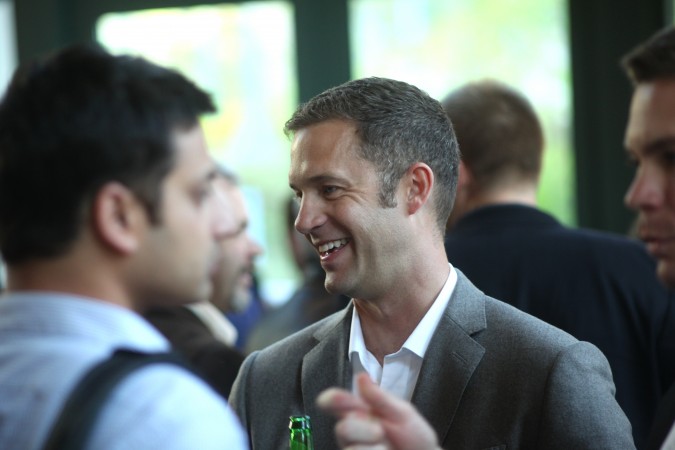
Kevin Esse at networking hour prior to attending Berkeley Startup Competition Finals, April 26, 2012
I have written before about my love for aquaponics.
Aquaponics is food production gardening enhanced by growing edible fish in symbiosis with vegetable plants. Both parts of the system are made more productive by the presence of the other half. Fish poop gets converted by bacteria into rich fertilizer. The fish grow faster because the plants keep the fish tank cleaner. It’s a great growing system that I feel should take over the world on such a scale that every person has their own system at home.
I am too busy in life to advance this dream, but the team at Back to the Roots has time and energy and market traction, so I think they would be ideal to push aquaponics to a large audience. I am so excited about this that I have already offered to tell the company everything I know about aquaponics free of charge to encourage them to get this to market.
I suspect they plan to start with small, under USD $100 demonstration kits. This in my mind is the way to start.
I bought my startup supplies for my aquaponics system from The Aquaponics Source. This online retailer sells complete systems, but the price is too high for people to buy casually, at over USD $1,000. I believe a profitable sub $100 kit could be sold, as what’s required is similar to what’s inside a Mr. Coffee brand coffee maker — two water containers, a pump, a heater and some electronics to coordinate the steps. I can get a nice computerized Mr. Coffee coffee maker for about USD $25 from Amazon, so even in the smaller quantities a demonstration aquaponics system would sell in initially, I think it can be done.
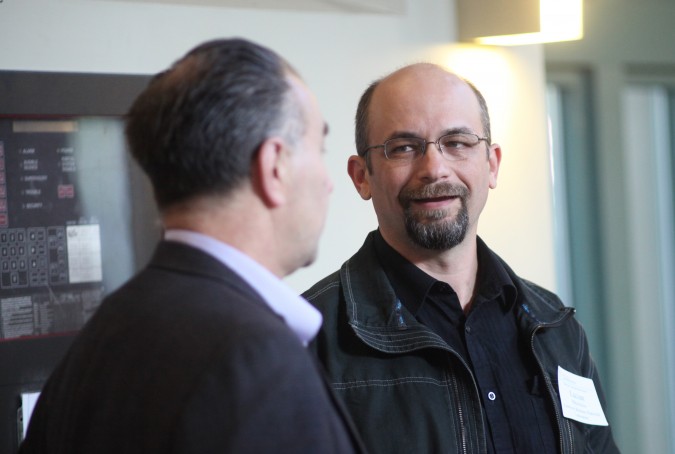
Lucian Mihailescu of Lawrence Berkeley National Laboratory attends the Berkeley Startup Competition, April 26, 2012
I love advising startup companies, and I would particularly like to advise about aquaponics, even though I know relatively little about the subject, since I’ve only built one demonstration system so far. My system was a modest success for I grew the largest and sweetest tomatoes I have ever eaten.
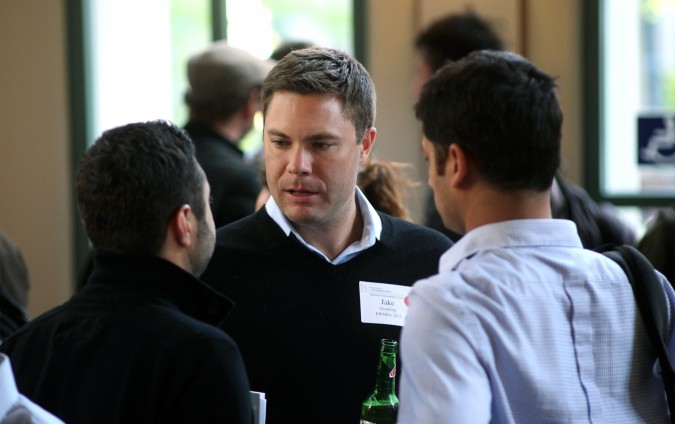
Jake Gentling at the networking hour prior to attending the Berkeley Startup Competition Finals, April 26, 2012
HARBO Technologies won First Place in the Energy and Cleantech track. I introduced myself to co-founder Boaz Ur and mentor John Matthesen after the conclusion of the event. The company is working on something I find impressive and interesting. I have made arrangements to interview the team, so I will hold my remarks until after that interview.
My friends at Modify Industries took home a USD $1,000 prize for coming in second place in the Products and Services Track. This outcome was inevitable, and I predicted it accurately the moment I saw Modify was competing with Back to the Roots. Back to the Roots simply has had much more commercial success so far. While Modify has sold between 10,000 and 100,000 watches to such companies as Google and Hewlett Packard, they haven’t yet cracked the retail store market, and they haven’t been on the evening television news. It’s rare for a company to be so far along like Back to the Roots, but still be eligible to compete in the Berkeley Startup Competition. In all other years where there was a Products and Services Track, Modify probably would have won that track. I pay attention to these things because I was a judge for this competition for the eight years through 2011. This year I mentored the team University Gateway, which did not make it to the finals since Modify and Back to the Roots filled up the Products and Services Track.
Modify gave an impressive and bold presentation, where they outlined a dream for their enterprise far bigger than time pieces. They probably adjusted their pitch to compete with Back to the Roots. But they forgot to show their product in action amid all the grand dream spinning. How so? They forgot to personally show the audience how to change a watch element from one silicone strap to another. This is worth showing at every pitch for it’s compelling and like nothing I’ve seen in the watch business. No tools, no training — 10 seconds and you have an all new look.
Finally, I want to give some space to my friend and fellow photographer Bruce Cook. I’ve known Cook since nearly the inception of The Lester Center for Entrepreneurship & Innovation. He’s a fixture at all sizable Lester Center events. He has his own photography business, Bruce Cook Photography, and is not a University of California employee. I can’t recall there ever being a different photographer for a Lester Center event. The picture above is of Cook standing under the video light in Anderson Auditorium. The picture below is of Cook taking a picture during the networking hour in the Bank of America Forum, the large gathering area just outside of the Anderson Auditorium. Cook took the picture above of Dean Lyons speaking to the audience. Thank you Bruce!
If The Lester Center is reading this, may I suggest that you contact Cook and work out a deal where his vast library of photographs of Lester Center events over the last twenty years can find a permanent home on the Lester Center website and in the University library system. Cook has photographed some of the most important figures of our time, and the tremendous majority, over 99%, of his photographs have not been published. I think these photographs should also be published on Facebook so that it’s easy to crowd source the identification of the people in the pictures, via the Facebook tagging system. Once the faces are tagged, then the captions on the Lester Center website can be updated to reflect the identities of those pictured.
Why do this?
The Lester Center and its events are documenting history. It’s that simple. Bruce Cook has a treasure trove of historic pictures that few have ever seen.
As an added bonus, publishing and captioning Cook’s 100,000+ pictures will boost traffic to The Lester Center’s website, as people search on Google and similar sites for the many luminaries Cook has photographed. The search engine optimization benefits to posting these pictures will probably overshadow every other single project you could undertake.
This is my idea alone.
Cook did not plant this, suggest this or hint at this.
I’ve been thinking about this for years now, and here seems like a fine place to promote the idea.
I believe I have shared this suggestion with Jerry Engel when he was Executive Director of The Lester Center, but that was only in passing at a hectic Berkeley Entrepreneurs Forum, not a written proposal such as this one.
Please consider this official advice, and let me know when I can blog about the happy news. Thank you.
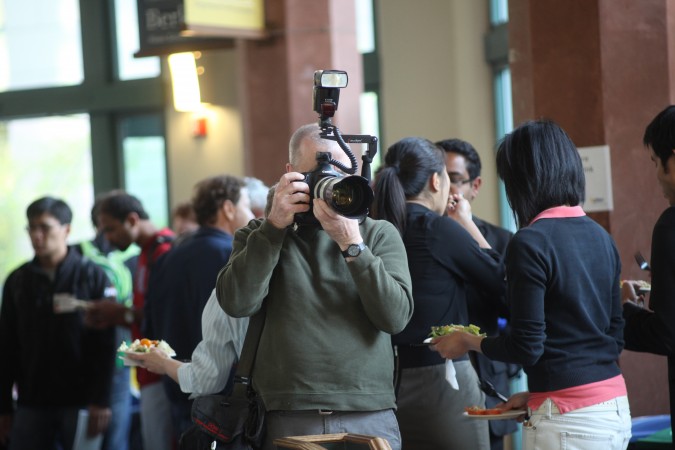
Bruce Cook, the photographer for The Lester Center events, covers the Berkeley Startup Competition, April 26, 2012
I introduced myself to all the finalist teams except AdrenaRX. I believe the members from that team departed before I had a chance to find them.
I offered each of the eight finalist teams except for Modify and Back to the Roots the opportunity to be interviewed by me for a future blog entry. Two of the teams have contacted me to schedule an interview. Four teams have not yet contacted me.
I know the Modify and Back to the Roots founders, so I did not offer to interview them. This was not meant as a snub — I simply forgot to offer in my excitement of congratulating them. Both teams are doing so well they don’t need my blog coverage, but if they would like more in depth stories, I am happy to meet with them. Just send me a message. I am on Facebook and easy to reach. I have turned on the ‘subscribe’ feature, so everyone reading this is invited to subscribe to me on Facebook. You may also sign up with your email address to receive updates to this blog, in the upper right corner of this page.
All the pictures I presented above except for the one by Bruce Cook are also on my Facebook page in this album. If you know these people, particularly the people in the shots with the giant checks, please tag them on Facebook so I can update the captions here with the names. All my pictures on Facebook are public, so if you tag someone there, I consider those names to be public, and on that basis I will update the captions here.
The sponsors for the 2012 Berkeley Startup Competition include:
Gold level:
Claremont Creek Ventures
DCM
UM
Silver level:
Javelin Venture Partners
Lowenstein Sandler
Mintz Levin
Mohr Davidow
Morgan Stanley
Morgenthaler Ventures
Morrison & Foerster LLP
Wilson Sonsini Goodrich & Rosati PC
Individual level:
There were possibly other individual sponsors. No individual level sponsors were listed in official materials this year, a departure from past years.
The Executive Committee for the 2012 Berkeley Startup Competition:
Co-Chairs
Nick Mascioli
Adam Sterling
Tom VanLangen
Judging & Sponsorship
Robbie Allan
Jane Buescher
Vivien Leong
Larry Pier
Marketing & Events
Stephanie Knoch
Krishna Shah
Mentorship & Events
Amara Aigbedion
Hrishikesh Desai
Program Manager
Kirsten Berzon
Berkeley Startup Competition finalists, including Back to the Roots and Modify, are announced
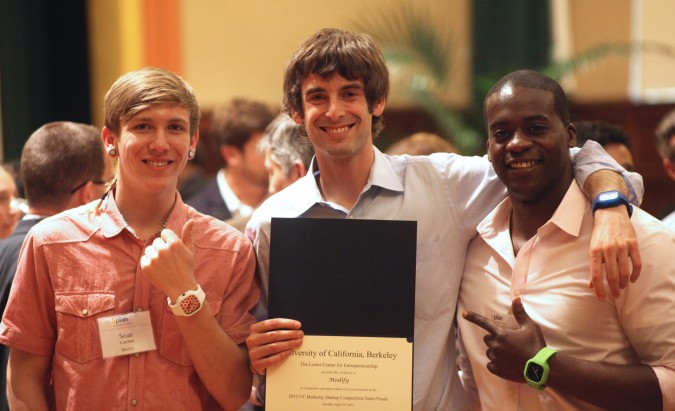 HARBO Technologies
HARBO TechnologiesSean Linehan, Aaron Schwartz and Ayo Oluwole of Modify, April 24, 2012. Modify is a finalist in the 2012 Berkeley Startup Competition.
Last night, on April 24, 2012, I attended a reception at the University of California Berkeley Clark Kerr Campus. The reception was held to announce the finalists for the 2012 Berkeley Startup Competition. This event used to be called the Berkeley Business Plan Competition. I competed in the finals of this competition in its inaugural year, and have sponsored the competition every year since, including in 2012.
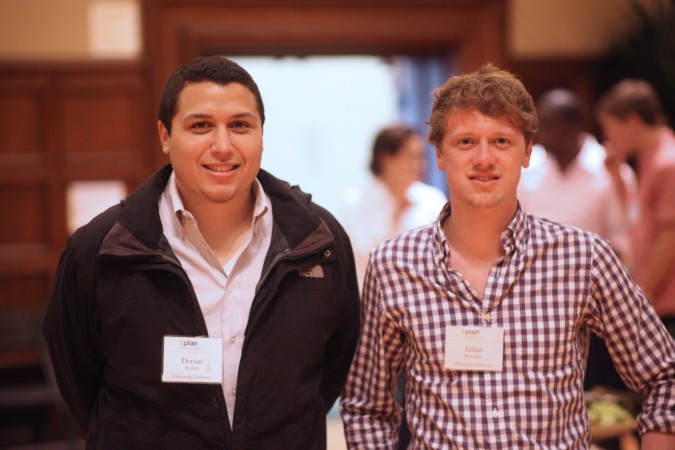
Dorian Walder and Julian Riediger of University Gateway, April 24, 2012. Kevin Warnock mentored this team this year.
This year I was a mentor to semi-finalist team University Gateway, lead by Dorian Walden. I got to know Walden over four meetings, some of them stretching to 3 hours around my dining room table. Sadly, University Gateway did not progress to the finals, but it was easy for Walden to understand why.
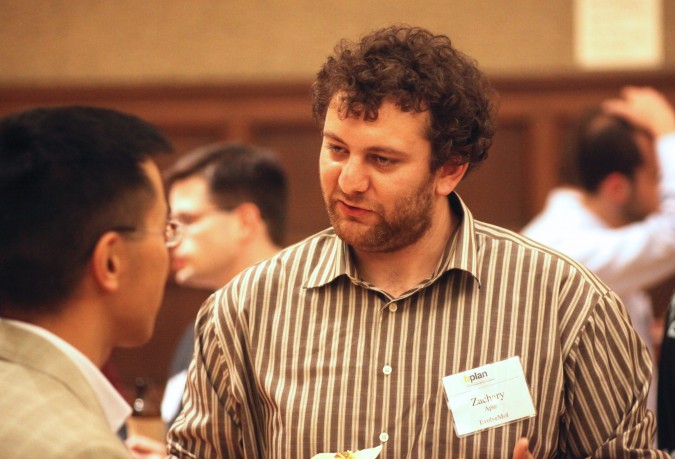
Zachary Apte of EvolveMol, April 24, 2012. Apte is at the Berkeley Startup Competition finalists announcement reception.
Two teams I know personally were in the same judging category as University Gateway — Products and Services. University Gateway is an Internet company, but the track for Internet companies apparently was filled up already. This meant University Gateway was competing with companies that make and sell physical goods.
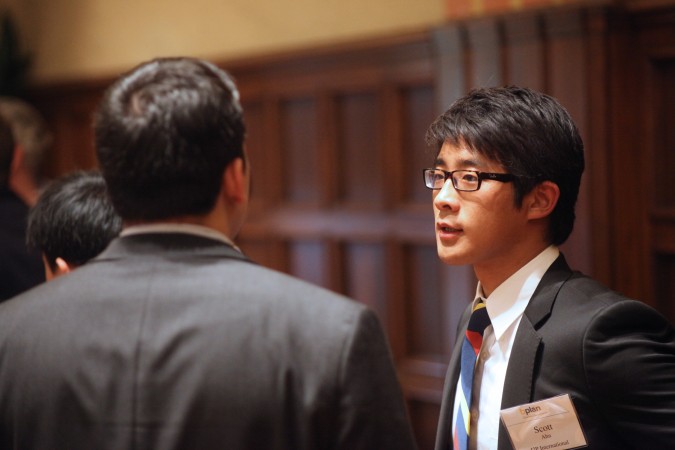
Scott Ahn of J2P International, April 24 2012. Ahn is at the Berkeley Startup Competition finalists announcement reception.
The teams I know that competed in the Products and Services track both were advanced to the finals. I was 99.9% confident that this would be the result, even though I knew nothing about the other competing teams. I was so confident because the teams I know are so strong, and I have been a judge for this competition for the past 8 years or so. I know from experience that teams this strong always make it to the finals.
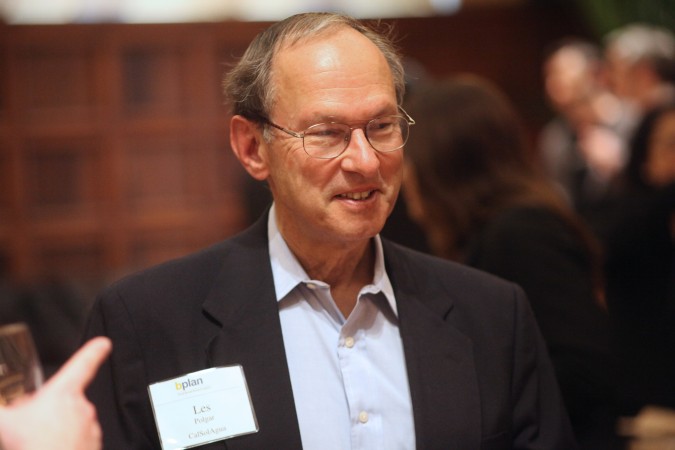
Les Polgar of CalSolAgua, April 24, 2012. Polgar is at the Berkeley Startup Competition finalists announcement reception.
I also know that teams this strong are very rare, so it was unlikely that the Products and Services track had any other teams so strong. I have never gone home from judging thinking that a third team from my judging track should have gone on to the finals.
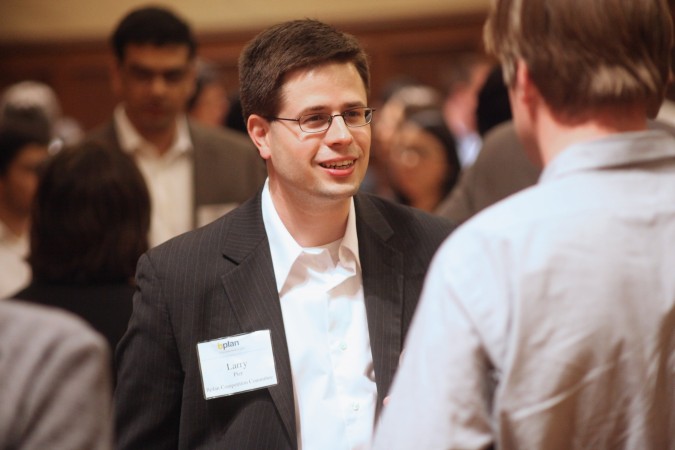
Larry Pier of Berkeley Startup Competition, April 24 2012. Pier is at the Berkeley Startup Competition finalists announcement reception.
University Gateway has a good idea, and I hope that Dorian Walder and Julian Riediger make their venture a success. The company is still in stealth mode, so I won’t tell you what they do yet.
The Products and Services teams that advanced to the finals are Modify and Back to the Roots. Both are unusual companies for this Berkeley competition.
Modify makes wrist watches that you can change easily to suit your tastes. The straps are made from silicone, similar to what silicone bake ware is made from. One can pop the time piece out of the strap/case in just a second, with no tools or special skills required. The straps are available in bright colors, and I describe them as chunky chic. The team from Modify are each wearing a Modfiy watch in the photograph I took at the top of this post. I am friends with Modify founder Aaron Schwartz. We see each other most months at the Haas Founders group I wrote about March 11, 2012.
Schwartz is a likeable and modest guy — only when researching this blog post did I discover he’s been profiled in a blog published by The New York Times newspaper. The New York Times is worth tens of millions of dollars less than photo sharing smart phone application Instagram, but I’d much prefer to be written about in a blog by The New York Times than in a blog by Instagram.
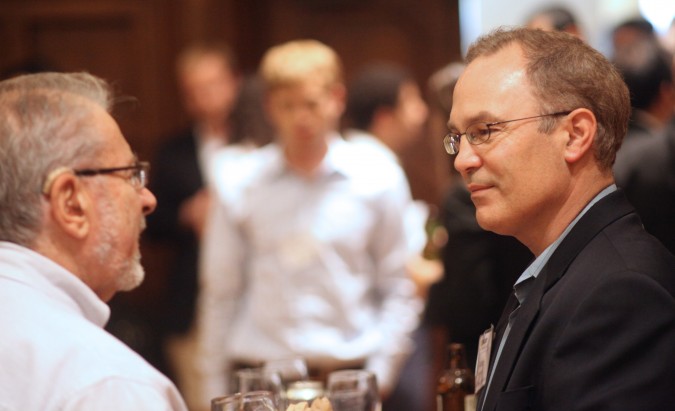
John Steuart of Claremont Creek Ventures, April 24, 2012. Steuart is a judge for the Berkeley Startup Competition.
Back to the Roots makes and sells affordable oyster mushroom growing kits. I’ve written about Back to the Roots when I saw their CEO Nikhil Arora speak on a panel at a Food Startups Meetup run by my friend Matthew Wise, the co-founder of both Founderly and Tableslice. Back to the Roots has 20 full time employees, or so I was told when I interviewed a staff member at their booth at the San Francisco Flower and Garden Show on March 24, 2012.
Back to the Roots has received lots of press coverage, including two minutes and forty seconds on the national CBS Evening News in the United States on March 15, 2012. The newscast says that Back to the Roots sells its products in over 1,000 stores and has 28 employees. Impressive.
Both Modify and Back to the Roots have businesses that are well along. Modify has sold _____ of thousands of watches to companies as well known as _____ and _____. [I’m waiting to hear from Schwartz to fill in the blanks in the last sentence. I know the values, but I want to verify the numbers and names I know are meant to be public information.] Back to the Roots sells its kits at Whole Foods Market and Home Depot. While Modfiy and Back to the Roots are still startups, they are making big strides and are companies to watch.
The reception was well attended and busy. I got to talk with my fellow judges from past years of this competition. I captured video. I took hundreds of pictures. I didn’t eat until the event was technically over. What I didn’t get to do, sadly, was interview the finalist teams that I didn’t know. If they are reading this and would like to be the subject of a future blog post, I invite them to contact me. I’ll meet you for coffee and you can give me your pitch and I’ll write about your venture.
Here is a list of the 2012 finalists for the Berkeley Startup Competition. The descriptive text that follows was provided by the teams themselves.
- Kloudless, Inc.
Kloudless is a free service that helps you manage all the things you put in the cloud. We enable users to search for, access, and manage their information that is spread across the Internet. We’re starting with email attachments, the black hole of cloud services, and will expand to other cloud services in the near future. Our solution addresses an increasingly large problem as more and more information moves into the cloud.
- Traverie
Traverie is an explorer focused startup that leverages the emotional, personal and inherently social aspects of travel discovery to make the process visual, fun and trustworthy. We bring structure to the current ad hoc and offline model of discovering and selecting destinations. We blend user-generated content, professional content and advertising to deliver a compelling user experience. Our founding team comprises a designer, engineer and product manager from MIT, Harvard and Berkeley-Haas, respectively.
- AdrenaRx
AdrenaRx is a biopharmaceutical company focused on the prevention and treatment of heart failure due to toxicity from cancer chemotherapy. Each year, 1.6 million Americans are affected by cancer, and a third of these patients receive chemotherapy that can damage their heart. AdrenaRx has identified a new therapeutic target and a potent, selective drug that can protect the heart from damage by chemotherapy, and reduce a patient’s risk of developing heart failure after surviving cancer.
- Calcula Technologies
Calcula Technologies is developing a novel urological medical device for the removal of kidney stones outside of the operating room. Our patent pending technology will treat 4M patients/year in the US and EU. With clear FDA predicates and existing CPT reimbursement codes Calcula will be a major disruption in the field of Urology.
- Claro Energy
Claro Energy provides solar-powered water pumping solutions to meet irrigation needs of farmers in remote power-deficit agriculture areas in India where costly diesel generated power is the default choice. Claro Energy’s solar-powered pumps have near zero operating costs, are longer lasting and highly reliable when compared to dieselpowered pumps. In combination with sales, marketing and business development competencies, Claro Energy has also developed in-house integration and implementation expertise in remote rural regions of India.
- HARBO Technologies
During the first critical hours, oil-spills spread, split, and create escalating irreversible damage. HARBO develops the only emergency oil-spill containment solution for immediate response. HARBO’s Zero Time to Spill system is at standby position on-board oil-tankers/rigs and other ships and deploys a boom (floating barrier) within minutes to contain spills. HARBO’s advantage: Minimizing environmental damage, avoiding large containment/cleanup expenses, offering superb costefficiency and preventing a PR nightmare. “Containing oil-spills when they’re small, preventing big disasters.”
- Back to the Roots
Back to the Roots, started by two Haas Business School undergrads, promotes sustainability and zero-waste, while reconnecting people to food through its grow-at-home mushroom kit. Our gourmet mushroom kits are made with 100% recycled coffee grounds, and produce 2 pounds of fresh oyster mushrooms in just 10 days! People of all ages can actually grow and eat their own mushrooms all at home, a unique experience in today’s urban lifestyle.
- Modify
Modify is a brand built on freedom of expression. Customizable for individual style, Modify’s interchangeable watches offer dope design for anyday wear. Available in two different sizes and over 250 combinations, Modify is a brand made for anyone—anytime, anyplace. A proponent of exceptional personalized service, we engage organizations and fans to help create (and name!) watches. Modify Watches are available for corporate gifting and licensing.
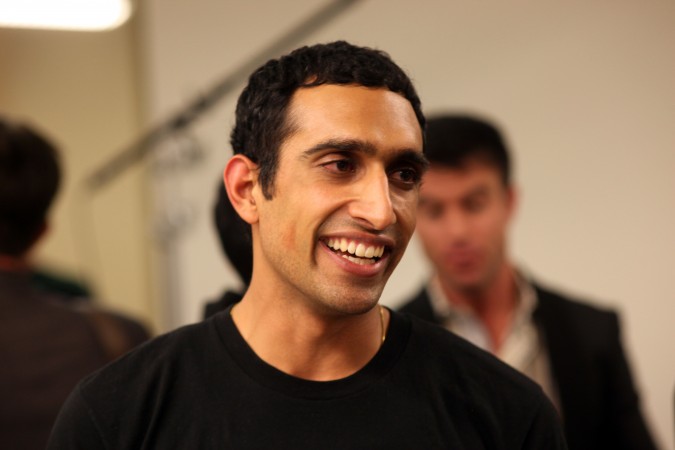
Nikhil Arora, the CEO of Back to the Roots. This was taken by Kevin Warnock on November 16, 2011, not at the Berkeley Startup Competition event.
Here’s the handheld video I captured of the finalist teams learning of their advancement and collecting their certificates documenting their achievements. Andre Marquis, the Executive Director of The Lester Center for Entrepreneurship & Innovation, delivers the opening remarks. John Steuart, Managing Director at Claremont Creek Ventures, comments on the judging process. Steuart’s firm is a financial sponsor of the competition, and Steuart is one of the judges.
—–
Anthony Franco of Better Cater, pictured above, contacted me and asked me to link to his startup’s website. Sorry for the delay in creating the link — I just saw your Facebook message from April 25th a few minutes ago. Kevin — May 3, 2012 @ 12:47am.
Berkeley Startup Competition – please participate
Please participate in the UC Berkeley Startup Competition, formerly known as the UC Berkeley Business Plan Competition. Here’s the email notice I received this morning from the competition organizers. Since this link will eventually not work, I prepared a screen capture of the email and I show it below this paragraph.
My friend Kelly Karns of AutoTB is shown in the picture at the lower right of the email screen capture above. That’s Andre Marquis, the Executive Director of The Lester Center for Entrepreneurship in the lower left. Marquis is shaking things up and making changes — I wrote to him October 5, 2011 suggesting the name of this event be changed to The Berkeley Startup Competition, and today I open my email and the name has been changed. My suggestion may not have been unique, so I am not trying to take all or even a majority of the credit for renaming the premier entrepreneurial competition at Berkeley. But I will take my earned share, however tiny or substantial that turns out to be.
I made the name change suggestion to take the focus off of writing business plans that few will read or pay attention to. Instead, I want the focus to be on creating viable startups that create jobs and change the world. Achieving this goal will require a lot more than a new name, and I hope to be invited to contribute more of my many ideas to help reach this goal.
I was a finalist in this event in 1999 and my success I trace directly to this competition. I am grateful that the rules allowed me to compete. I am grateful the rules still allow me to compete, should I want to start a new company.
I have donated USD $20,000 to the competition since 2000 — I am that grateful.
The Lester Center has extended to me many perks beyond what I technically ‘paid for’ with this $20,000, and I thank them for their extraordinary generosity. For example, I’ve recently concluded a dozen year stint on the Advisory Council of the Berkeley Entrepreneurs Forum. I paid nothing for this membership during this dozen years, despite the Council being a fund raising mechanism for the Lester Center. I enjoyed dozens of fascinating dinners during this period, and I made a lot of smart and interesting friends by my membership, including Jerry Engel, Brian Goncher, Robert Dellenbach, Laura Oliphant, Sam Angus and Tom Kintner and by association his brother Avery Kintner. I will miss these twice yearly dinners, which I never missed unless I was out of California.
I am talking with Marquis to expand and extend my assistance to the competition over the next 14 years. There is so much more I can do to help, and the future looks bright under the stewardship of Andre Marquis and the leadership of the student organizers, who have the responsibility to run and perpetuate the event.
Berkeley Entrepreneurs Forum at Google, Inc. headquarters, October 27, 2011
Thursday October 27, 2011, I attended the first Berkeley Entrepreneurs Forum ever held away from the University of California at Berkeley campus.
The Forum was held in Building 40 at Google, Inc. headquarters in Mountain View, California USA. Getting to the event was a challenge because Google was throwing a huge celebration for the Indian national holiday Diwali. As a result, parking was tight and there were hundreds of people in the huge courtyard between the massive Google buildings. I’m not complaining for it was festive and an adventure. I photographed the 6,000 burning candles artfully arranged in the courtyard, as you can see at the bottom of this post. There was a live band. The Google cafeteria was packed. It was exciting.
The Entrepreneurs Forum was a small event compared to the outdoor Diwali celebration.
The title of the Forum was ‘Power Hungry: Developments in Energy-Efficiency Technologies for Data Centers.’ This was an appropriate event to have at Google, which I suspect runs the largest collection of computers in the world.
I learned a lot at this forum. For example, computer rooms that are chilly are computer rooms that are horribly inefficient. Modern servers can run fine at temperatures around 85F degrees, and sometimes even warmer. Here’s the official video, immediately above.
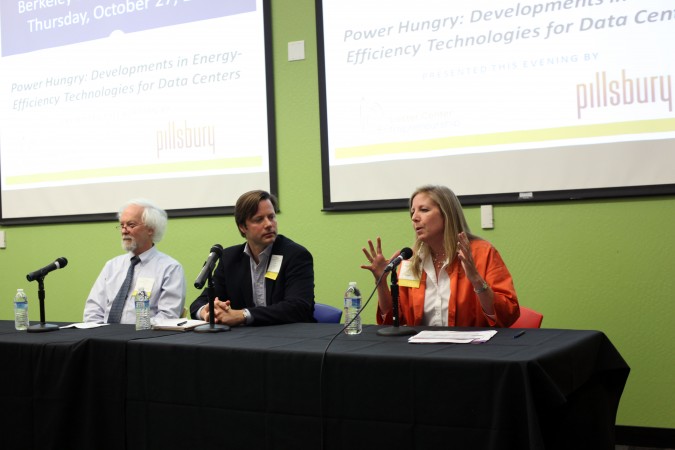
Dale Sartor, John Robison and Joyce Dickerson on panel at Berkeley Entrepreneurs Forum, October 27, 2011
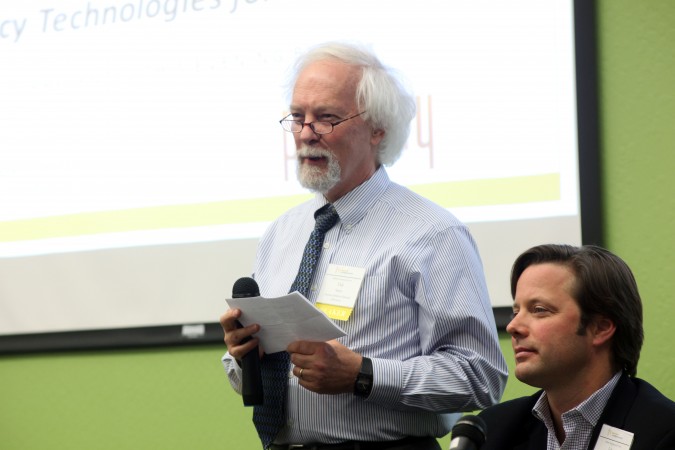
Dale Sartor, P.E., Applications Team - Environmental Energy Technologies Division, Lawrence Berkeley National Laboratory. Berkeley Entrepreneurs Forum, October 27, 2011

Joyce Dickerson, Sustainable IT at Stanford University, at Berkeley Entrepreneurs Forum, October 27, 2011

Sylvia Burks, Partner, Pillsbury Winthrop Shaw Pittman LLP, at Berkeley Entrepreneurs Forum, October 27, 2011
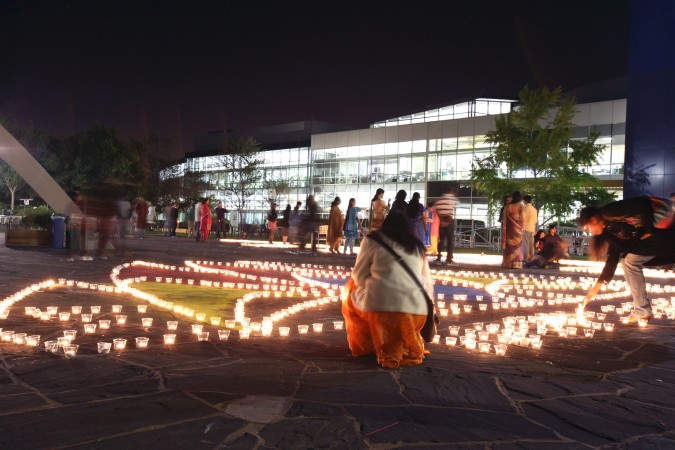
Diwali Festival of Lights with 6,000 candles at Google, Inc. headquarters in Mountain View, California, October 27, 2011. Photograph by Kevin Warnock.
[Note: I received a free pass to this event courtesy of my membership on the Advisory Council for the Berkeley Entrepreneurs Forum. I am writing here as a private citizen, not in any official capacity with UC Berkeley or the Berkeley Entrepreneurs Forum.]
UC Berkeley Founder School Demo Day
On October 6, 2011, my birthday, I attended the first Demo Day for the brand new Founder School at the University of California at Berkeley.
Without question, I was exceptionally impressed with the results of Founder School as explained at Demo Day. In fact, I was more impressed with what I learned and saw than I have been by anything else I have ever seen at UC Berkeley.
The only events that can compare for shear impact were two rock concerts I saw years ago — the B52s promoting what I consider their best recording Wild Planet at the Zellerbach Auditorium, and Alanis Morissette promoting Jagged Little Pill at The Greek Theatre.
Yes, I am comparing presenters at a geeky entrepreneur event to actual rock stars, which I’ve never done before.
Founder School was that impressive.
Here’s the video of the event so you can see what I am talking about here:
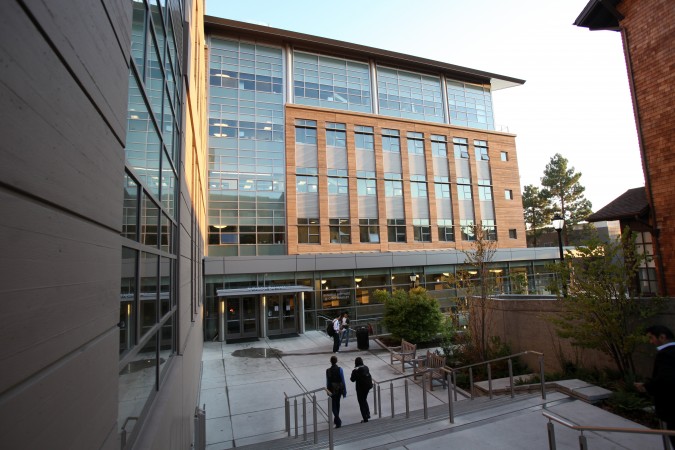
Founder School Demo Day was held at Sutardja Dai Hall at the University of California at Berkeley campus
The website for Founder School does a good job of describing the basics of what it is. But their site doesn’t capture the excitement I felt at Demo Day. What got me so excited?
First and foremost, Founder School is more than even the most ambitious business plan competition. I am a fan of business plan competitions, and have judged three separate competitions at three schools within UC Berkeley over the years. But those competitions are all outclassed by Founder School, because Founder School resulted in three out of the five companies raising USD $3,000,000 before Demo Day. The biggest prize I have ever seen at a university business plan competition is USD $50,000. It’s possible to start a company on well below $50,000, of course. But Founder School companies that raised money raised an average of USD $1,000,000 each during a program that was just ten short weeks. It’s much more possible to start an important company on $1,000,000 because that’s enough to hire paid staff, where $50,000 really isn’t.
The next feature of Founder School is that it’s the first large scale jointly run event sponsored by The Center for Entrepreneurship and Technology (CET) and The Lester Center for Entrepreneurship. The technology I saw as a judge for the business plan competition at the engineering school in about 2006 was more memorable and to my eye more sophisticated than what I usually see at the larger Berkeley Business Plan Competition. I’ve been telling people for years that the engineers need to be incorporated more into the teams for the Business Plan Competition. The Business Plan Competition teams are far too heavily weighted towards MBA candidates, to the decisive detriment of the teams.
Founder School was conceived by serial entrepreneur Steve Newcomb. He approached Jennifer Walske, Director of Social Entrepreneurship at The Lester Center, shown in the picture above. Walske then introduced Newcomb to Andre Marquis, the executive director of The Lester Center. Marquis and Newcomb had a series of meetings, and Ikhlaq Sidhu was brought into the mix. Sidhu is Director of CET, the Center for Entrepreneurship and Technology at UC Berkeley. Newcomb, Marquis and Sidhu worked together to make Founder School happen. From what I can gather, the success of Founder School was a huge group effort, with many more than these three people contributing tremendous effort. I gather that it would never have happened and been successful without the relentless push provided by Newcomb, who has started a sold an impressive series of companies.
Here’s some background on the graduating companies, from the Lester Center website:
Thirst: Building new web and iOS apps that will use proprietary natural language processing technology for social media (think Rapportive or Xobni for Social Media).
Soragora: Augmented reality app allowing users to see the world in a novel way-simply point your phone at any nearby business, restaurant, landmark, or point of interest and learn all about it!
Flotype: Software that lets programmers build massively scalable web applications using Node.JS.
500Friends: Innovative Software-as-a-Service platform that enables leading e-commerce retailers to increase customer retention, acquisition, average order value, and social media engagement by rewarding shoppers not only for purchases but also for brand promotion, product referrals, and creating UGC.
I’m not sure if there were any MBA students on the teams at Founder School, but the staff of The Lester Center was prominently featured and highlighted, so I think in future years more and more mixing of business students with engineering students is likely.
I think that’s key to getting a Google or Apple sized company to come out of the University of California. Are you beginning to understand why I am so ecstatic?

Andre Marquis, Steve Newcomb and Ikhlaq Sidhu. Newcomb showing his award plaque recognizing his contribution to Founder School.
Another great perk provided by Founder School is the access it has arranged for graduating companies to present at SFBeta. For those of you who don’t know it, SFBeta is Bay Area’s ‘finest startup mixer’ according to their website. The founder of SFBeta is Christian Perry, in the green shirt immediately above. Perry invited everyone in the audience to attend as his guest the next SFBeta event on November 8, 2011. For those not in the audience, here’s the link to buy a ticket to attend the November 8, 2011 SFBeta.
Yes, it’s nice to give companies a soapbox on campus to talk about their startup, but the real movers and shakers of the Internet world don’t come to Berkeley to see these pitches. Instead, they’re at events put on by TechCrunch, AlwaysOn and other industry taste makers and pace setters. To my knowledge, no winning teams from any other business plan competition at Berkeley have been awarded guaranteed spots to demo at SFBeta.
I predict that next year the graduates of Founder School will be covered the day after Demo Day by TechCrunch, as it’s likely others have noticed the results this year and won’t miss it next year.
The video above shows the graduating teams describing their startups, and they do it better than I could write about it, so please watch the full video, even though it’s over an hour. It will be an hour that will change your impression of UC Berkeley, I promise.
I introduced myself to Steve Newcomb, the instigator of Founder School. I told him then that what I had just seen was the most impressive thing I had ever seen at UC Berkeley. I’ll say it again here in case he’s reading this.
Founder School is the most impressive thing I have ever seen at the University of California at Berkeley.
I want to help put on Founder School next year. Please let me know how I may contribute.Here’s a short clip of the networking hour and the audience as they’re taking their seats. These scenes are not included in the official video above, but they capture some of the energy and sold out excitement of the event, so I am publishing this clip.
[Note: I am a member of the Advisory Council for the Entrepreneurs Forum at The Lester Center for Entrepreneurship. I am a Venture Coach at CET. I am writing here as an independent blogger, not in any other capacity.]
